- info@naturebylennart.com

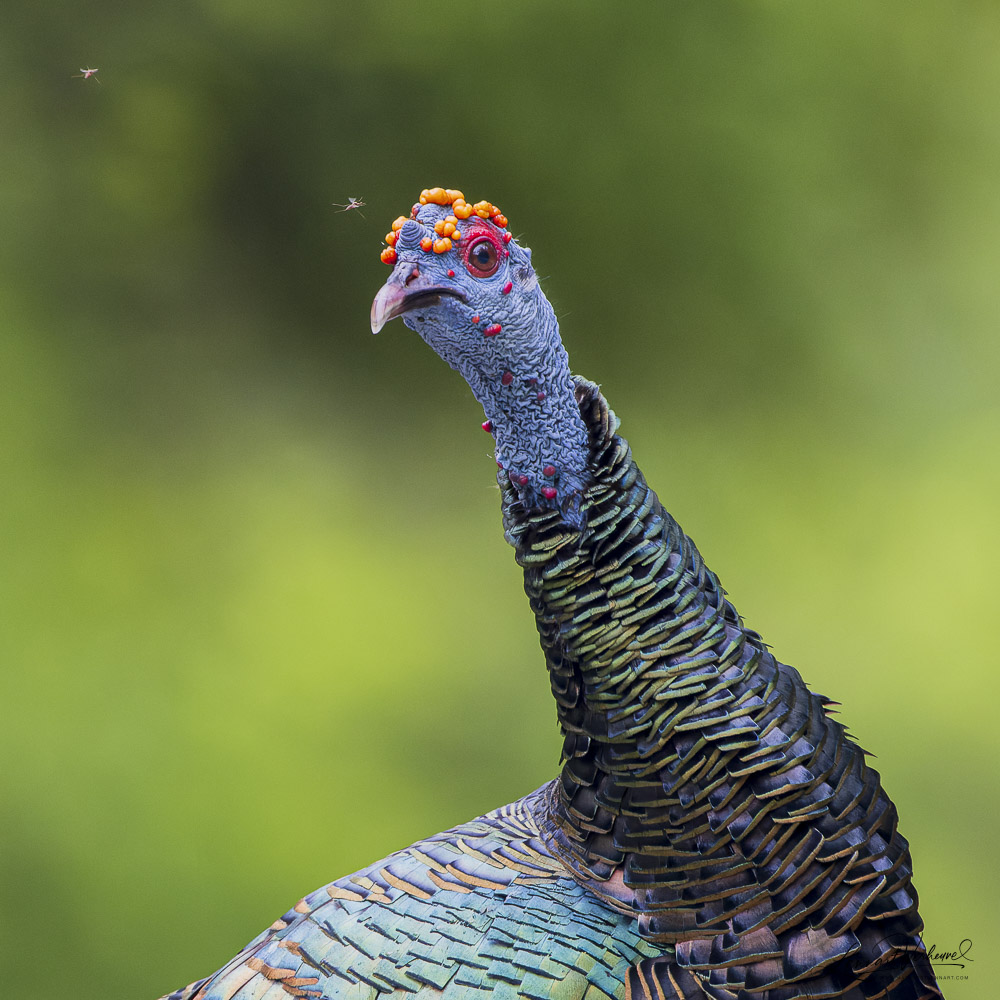
In June 2022, I unexpectedly found myself in Mexico, on the Yucatán Peninsula. Due to a job change, I suddenly had two weeks off and I wanted to spend them abroad. It was the perfect time of year to see Whale sharks in Mexico, so that became the goal of my trip. Eventually, I succeeded on the very last day. However, Yucatán has much more to offer, so I also wanted to explore the jungle!
The surroundings of Cancún and Playa del Carmen are what you could truly call a “tourist trap.” It’s completely tailored to the needs of predominantly American tourists who stay here in large numbers. This has a detrimental effect on the attitude of the local population: everyone expects a tip for any possible service, and many benefit from all opportunities to take advantage of unsuspecting tourists. Just for fun, take a look at the Google Maps reviews of gas stations in this area. Since I usually go out in search of specific animals in remote locations, I don’t have much experience with mass tourist spots, and this was a good reminder to stay away from such places.
Fortunately, unspoiled nature is not far away on Yucatán! With a rental car, you can reach various beautiful places within a few hours, and as the distance from Cancún increases, the population becomes friendlier and more authentic. A focal point of my trip was the Calakmul Biosphere. Part of this nature reserve is the Mayan complex after which the reserve is named.
I always find old buildings and structures interesting, but searching for animals usually takes priority for me. However, I had heard good things about the wildlife viewing opportunities at Calakmul, so I wanted to spend a few days and nights there. Because Calakmul is quite a drive from Cancún, I had planned several stops along the way to visit other archaeological sites. The advantage of these sites is that not only are the beautiful temples well preserved, but often the surrounding nature is as well. So, it’s like hitting two birds with one stone! In my research beforehand on Observation, I also noticed that many bird sightings were clustered around these cultural-historical sites.
The first place I visited is called Coba. This ancient Mayan city has a number of well-preserved pyramids worth seeing. There aren’t that many structures, but the complex is quite extensive with many paths through the jungle. It turned out to be popular to explore the complex by renting a bike or taking a rickshaw. Being a thrifty Dutch person, I decided to go on foot, but mainly to be able to pick up as many birds as possible along the way.
I found that I could more easily spot trogons in the Mexican rainforest compared to other places. Again, it was easy at this place, and I heard and saw several Black-headed Trogons.

Black-headed Trogon
Two birds that had caught my attention during preparation for the trip were the Eye-ringed Flatbill and the Northern Bentbill. Especially with the latter, the shape of the bill really stands out. Almost as if the bill has grown crooked, but this is indeed how they are supposed to look.
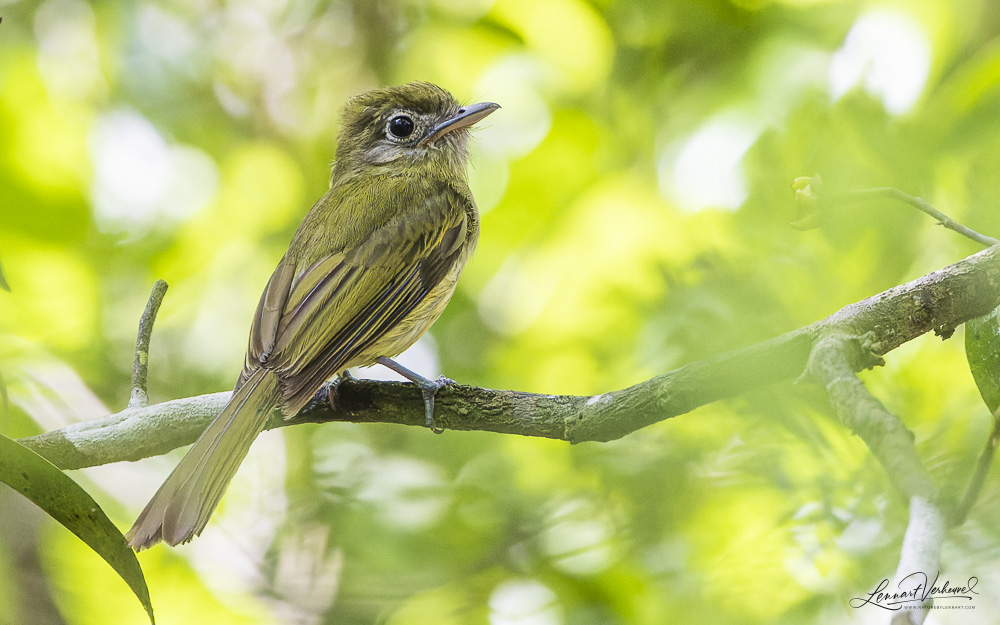
Eye-ringed Flatbill
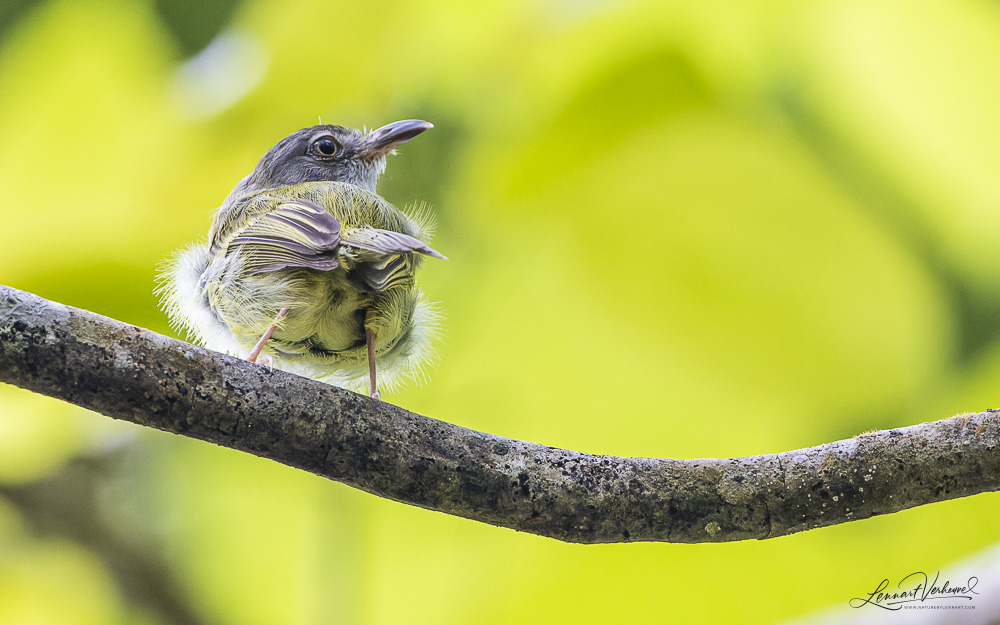
Northern Bentbill
I found them to be quite common in the rainforest. Also a common species was Clay-colored Thrush.
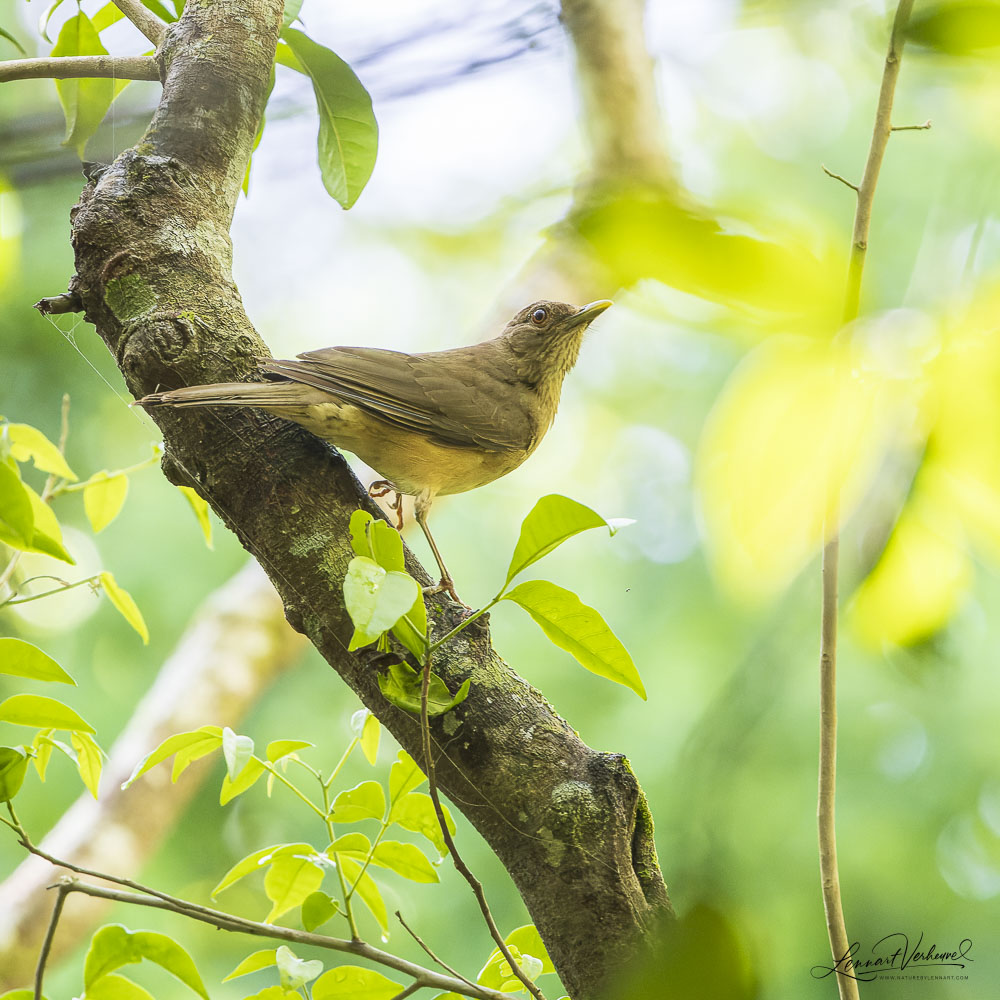
Clay-colored Thrush
Of course, as is always the case in the rainforest, you can go a long time without seeing anything before coming across a feeding flock where various species are present. One species that had nothing to do with these flocks is the Russet-naped Wood Rail, and I also encountered one of them on one of the trails. I’m normally used to rails being quite shy, but this one allowed itself to be beautifully observed.
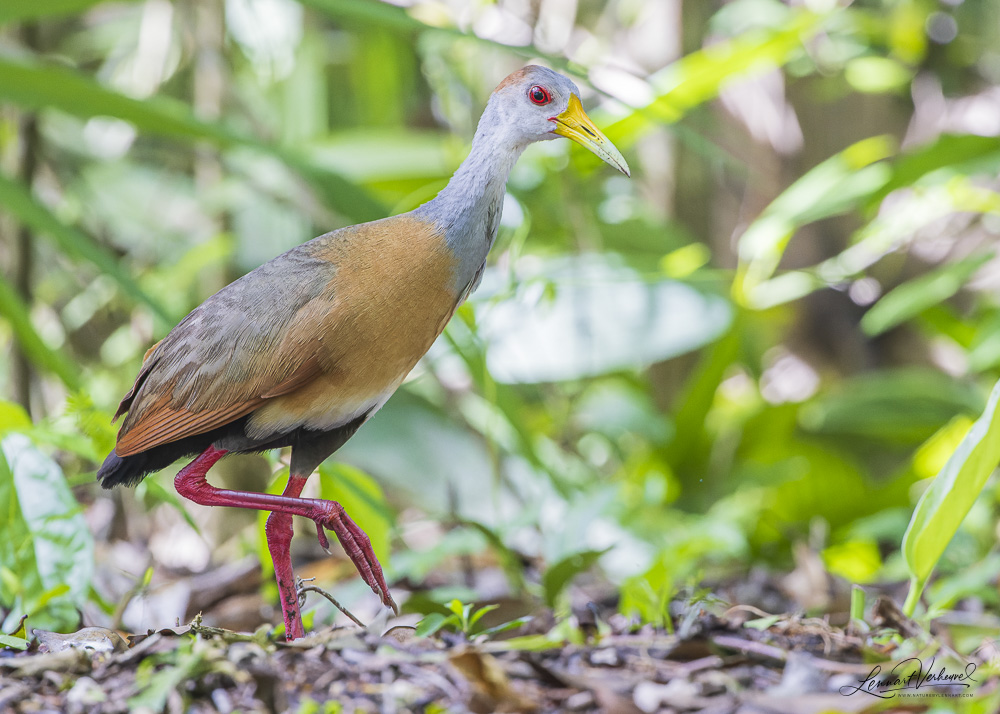
Russet-naped Wood Rail
In addition to all the birds, I naturally also paid attention to the various pyramids found here.

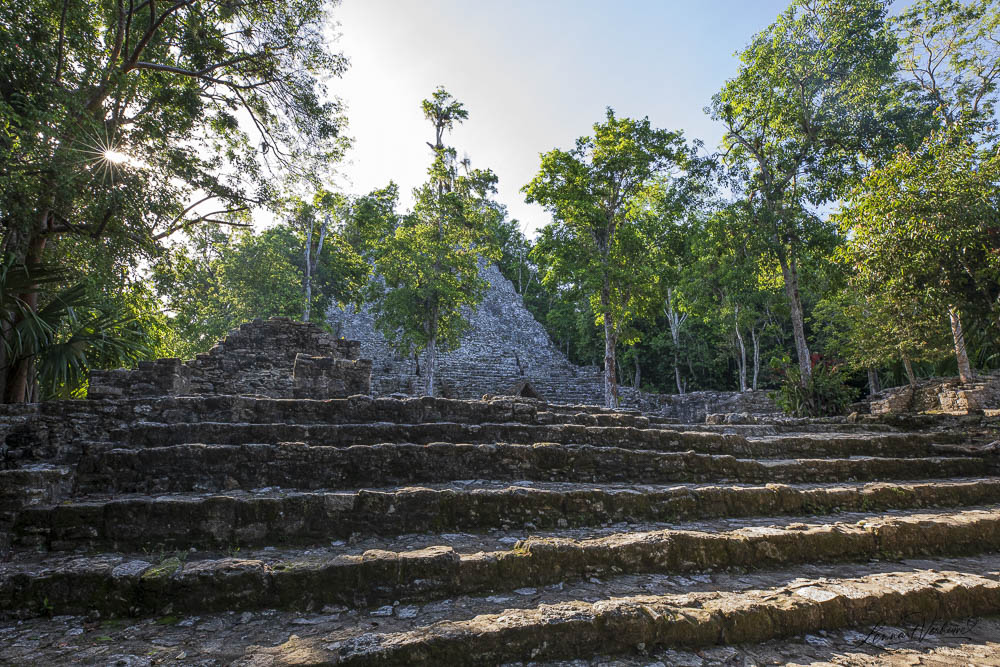
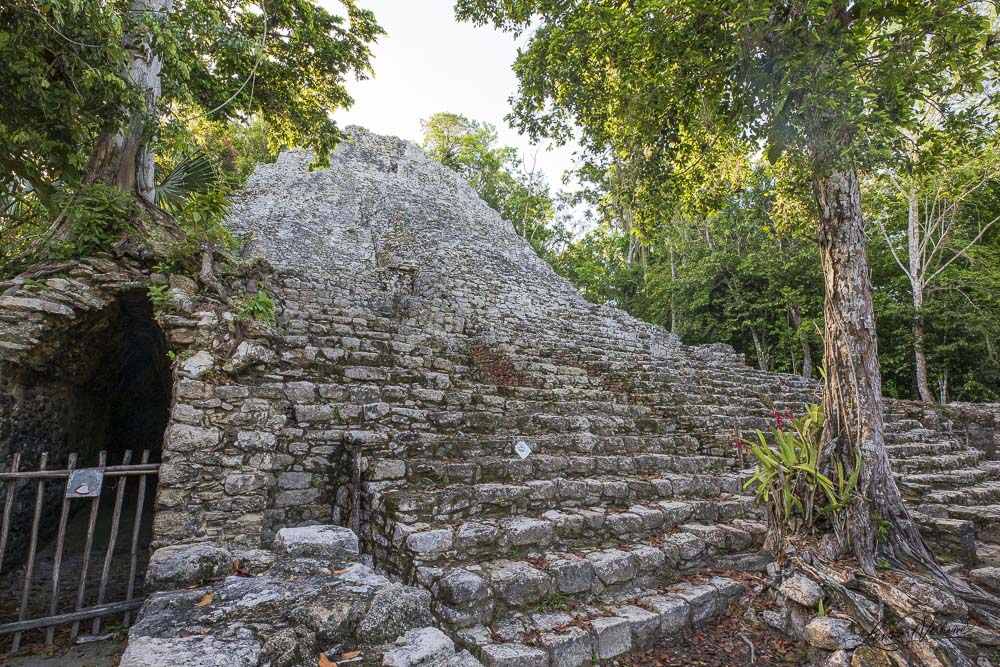
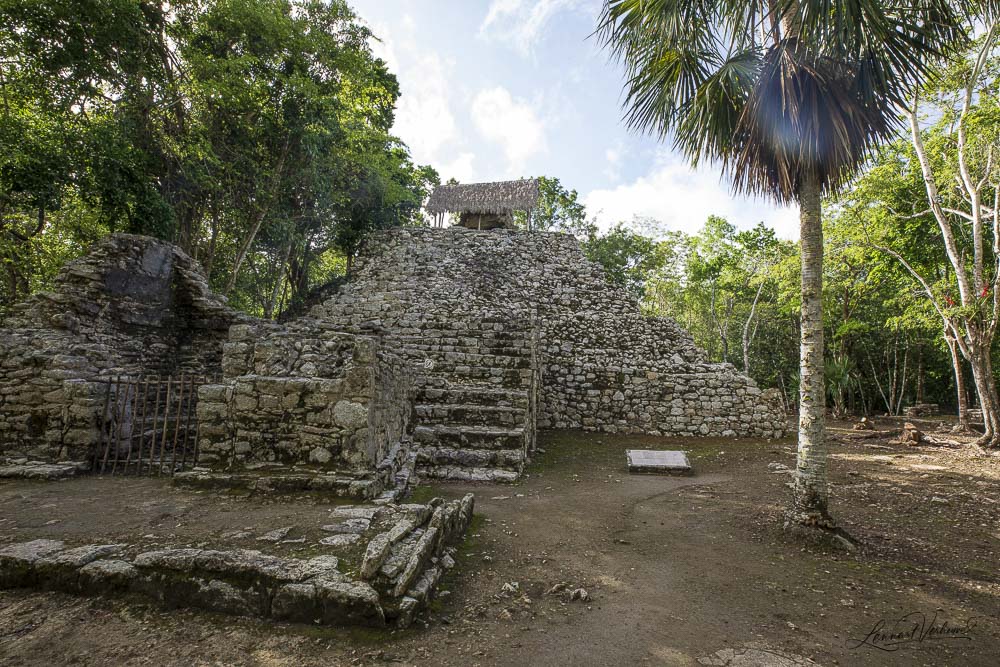
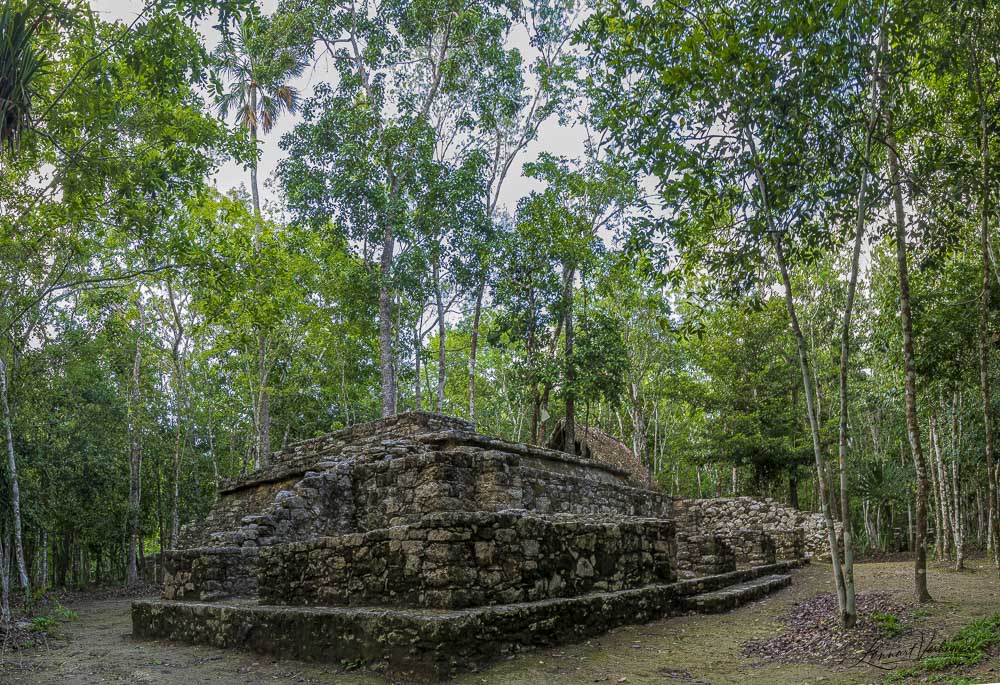
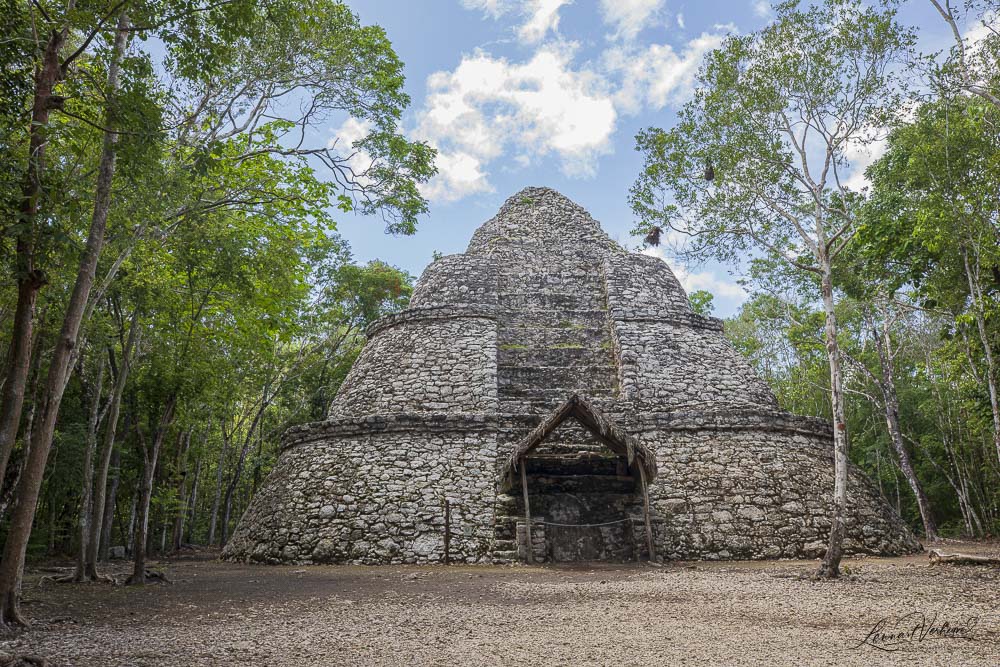
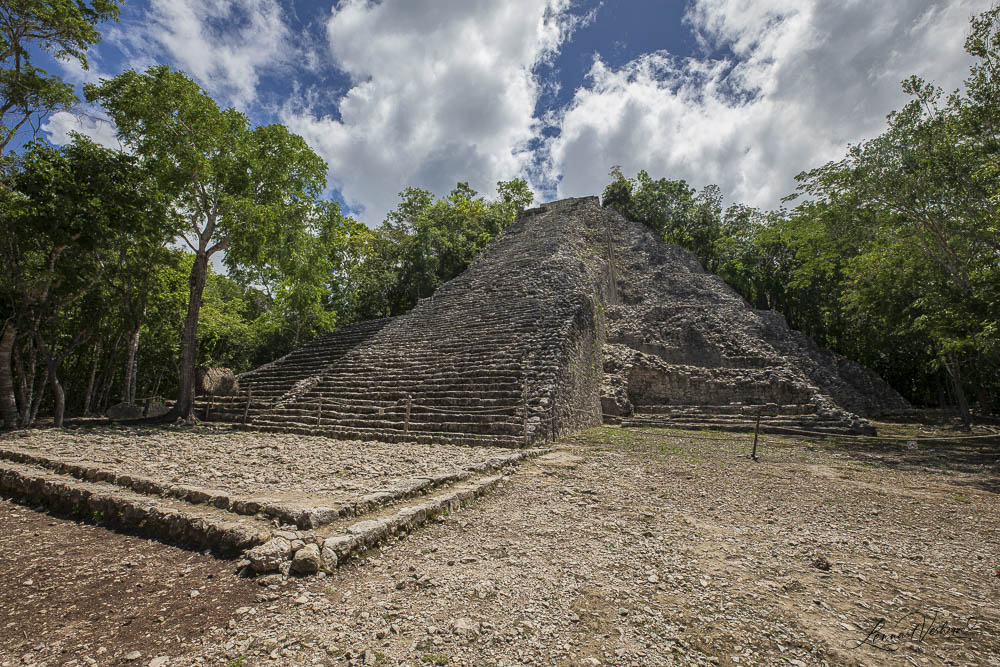
Piramides of Coba
It wasn’t until around noon, when I was already on my way back, that I encountered the highlight of the day: a group of Geoffroy’s spider monkeys! Spider monkeys are somewhat the cream of the crop of South American monkeys. They are species that are quite picky about their habitat, which is why many spider monkeys are (critically) endangered. Of all the species, Geoffroy’s is doing relatively well, but even this species is threatened and declining. I had good hope that I would encounter the species at some point, but when you don’t have many days in the jungle, it’s always very satisfying when it happens! I could observe them beautifully, and there were also a few little ones. The passing tourists saw me at work and were thus able to catch a glimpse of this beautiful species as well.
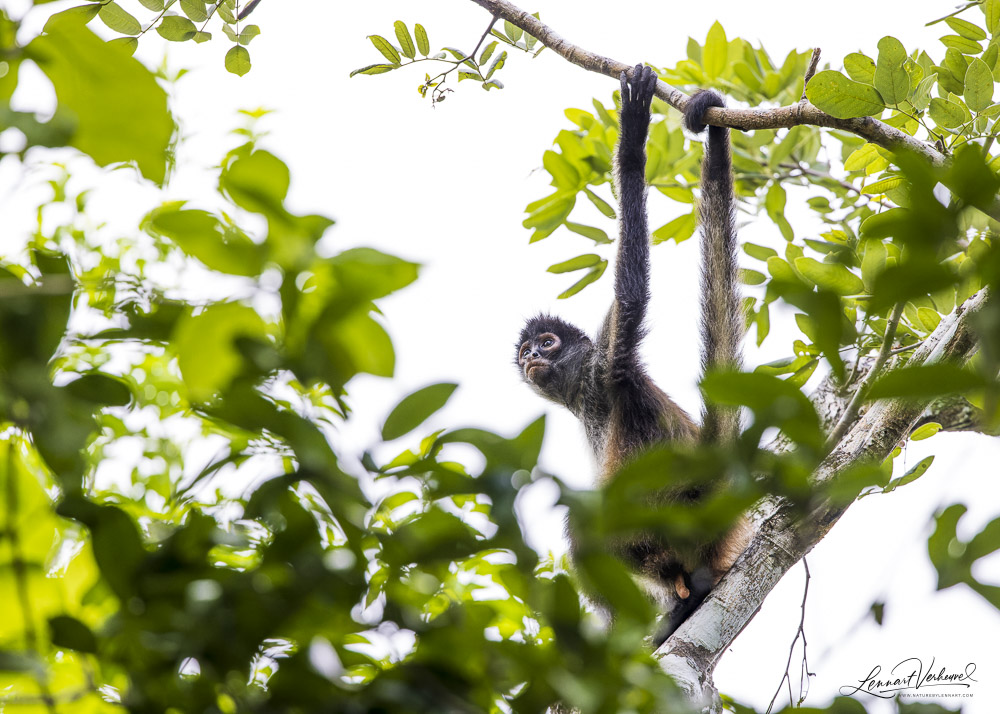
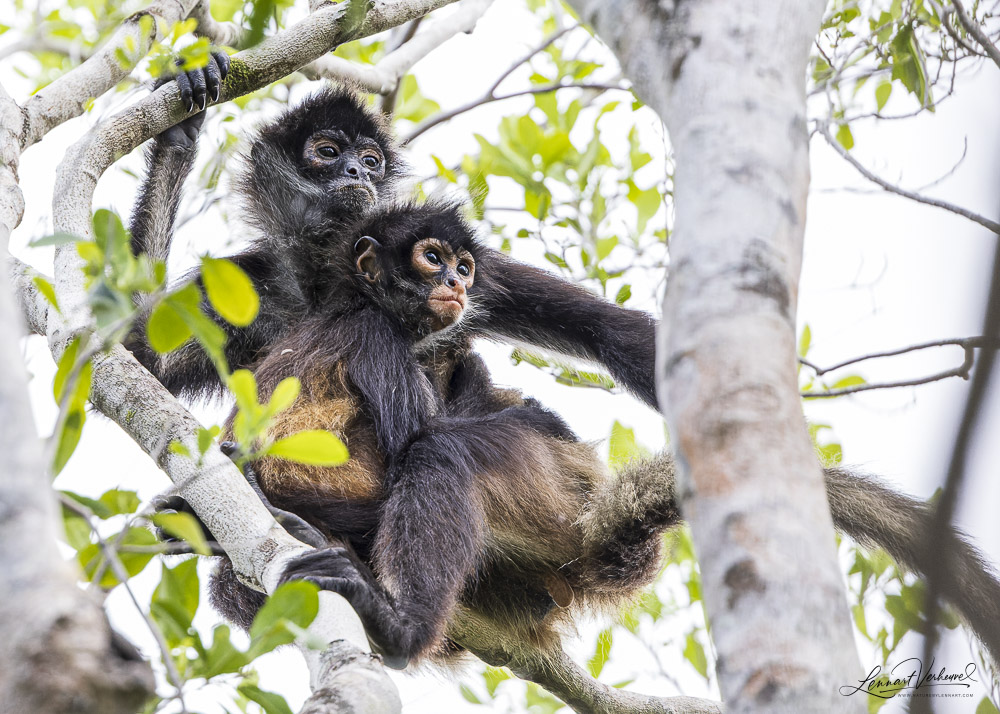
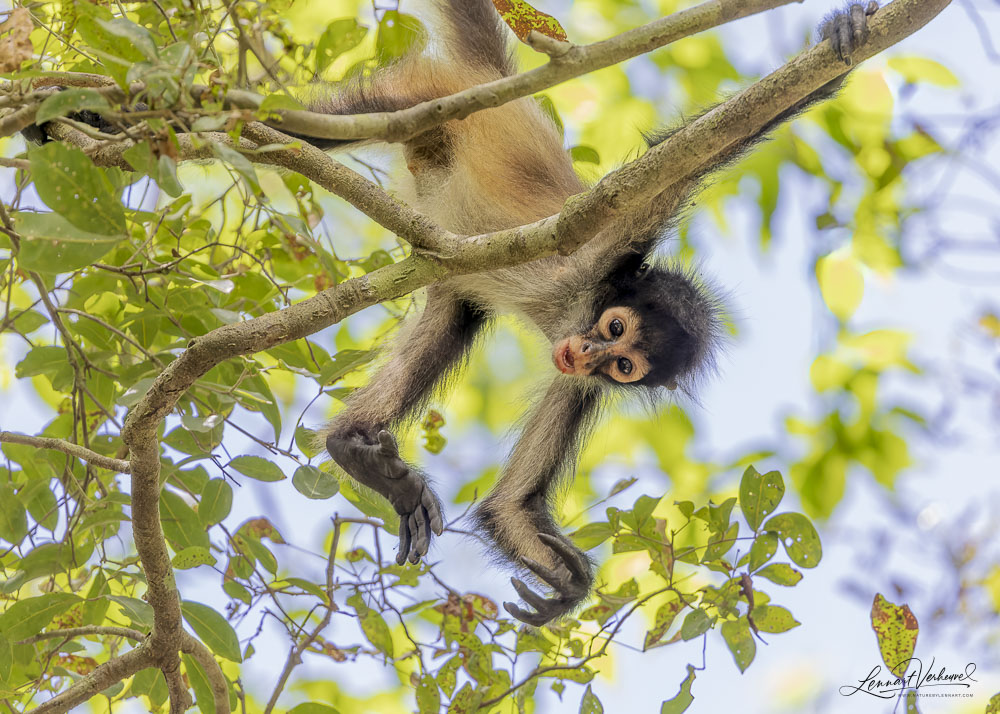
Geoffroy’s spider monkey
After that, I chose the town of Félipe Carillo as a base for the next day to explore some other natural areas, but then it was really time for Calakmul! My schedule was still flexible, but I had decided to spend at least three nights here. It was mainly the nights that interested me because I wanted to do my best to see a new cat: the Margay. I had relied on positive trip reports from others in which someone had actually reported a Margay. Tapirs and jaguars were also spotted in the area. For spotlighting, it was very convenient that there was a good paved road through the jungle, making it easy to drive up and down and search. So, it seemed like an interesting place to thoroughly explore.
Access to Calakmul is set up in such a way that there is first a twenty-kilometer road through rainforest outside the reserve. This part is already behind a barrier. It is managed by various private individuals and is not necessarily protected. However, good species were already reported here. Then there is another checkpoint with about fifty kilometers of road behind it, with the end goal being the complex of Calakmul. I knew that this last stretch was not freely accessible at night, but because I had heard good things about those first twenty kilometers, I thought it might be worth it.
I had arranged accommodation within those twenty kilometers so that hopefully I could go undisturbed on that road. Tents were rented out at Campamento Ya’ax Che, and financially, this was by far the most attractive option. It was a bit spartan, but still much better than sleeping in the car! There was also a small restaurant at the accommodation where about four dishes were available. It wasn’t a place where I would like to stay for weeks, but for a few days, it was perfectly fine.
Unfortunately, the animals didn’t cooperate. The first night, I went all out, but unfortunately, I saw little of note. It was fun to see a Nine-banded Armadillo that sniffed around my shoes.
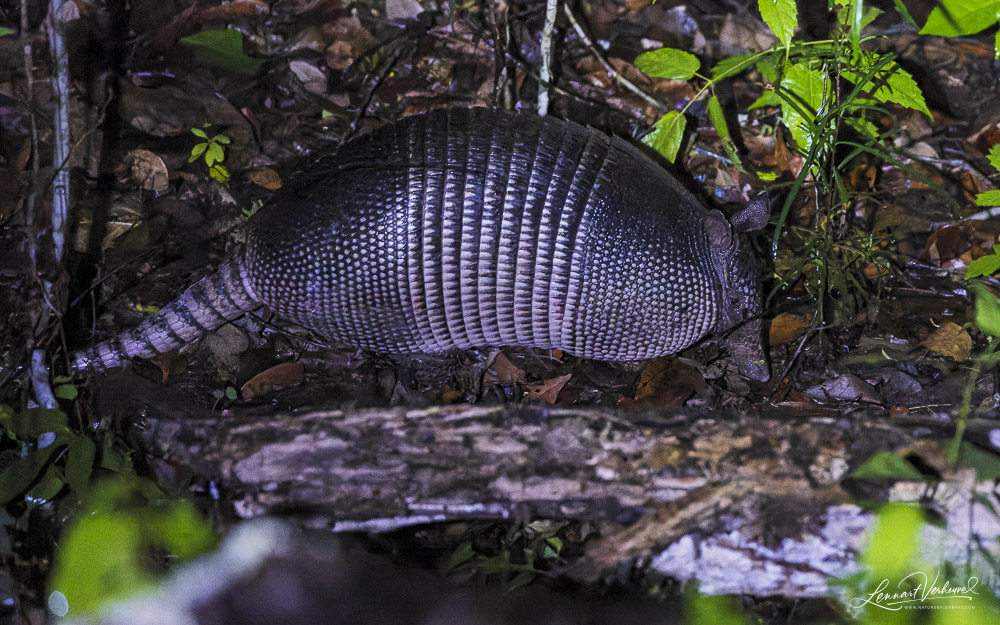
Nine-banded Armadillo
I eagerly continued early in the morning, but didn’t see any animals. Of course, I was the very first to pass that checkpoint towards Calakmul after that. I also had two important birds that I wanted to see along the way. Other birdwatchers had seen Great Curassow and Ocellated Turkey here. The latter is actually a true Yucatán endemic, but the former is a bird that suffers greatly from hunting and is therefore not easy to see. This would also become apparent because in the end, I didn’t have this species on camera. However, I did have a good observation with binoculars.
The Ocellated Turkey, on the other hand, was a different story. It showed itself exceptionally well! Along the way, I encountered some birds and when I stopped and spent some time with them, several birds flew out of the trees onto the road! It turned out to be quite a large group. The males were very beautiful with a distinctive head.
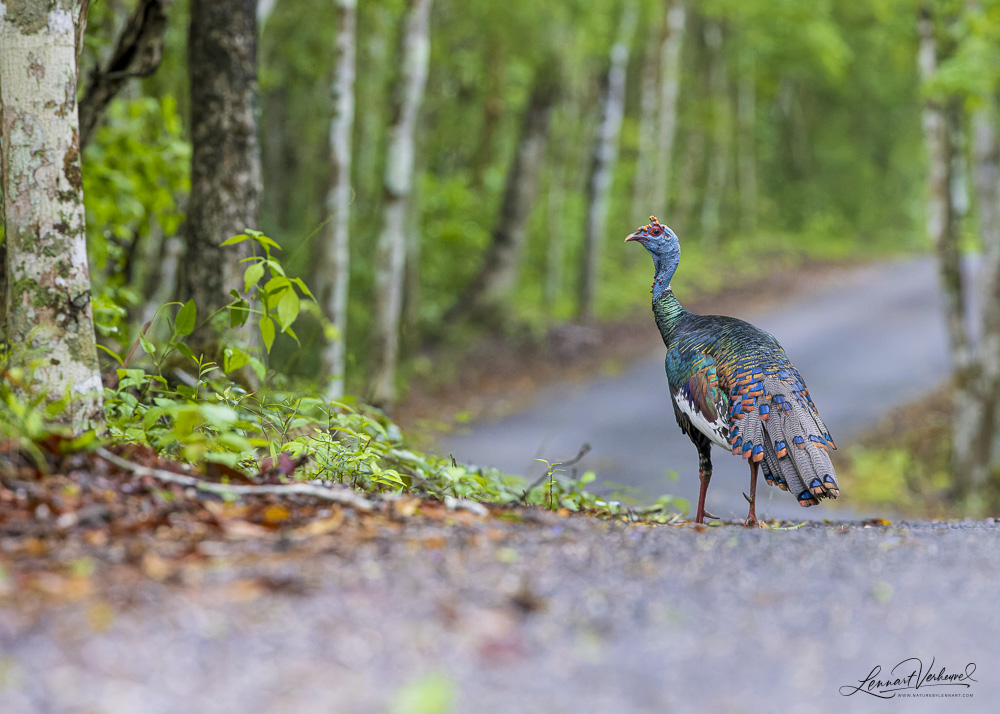
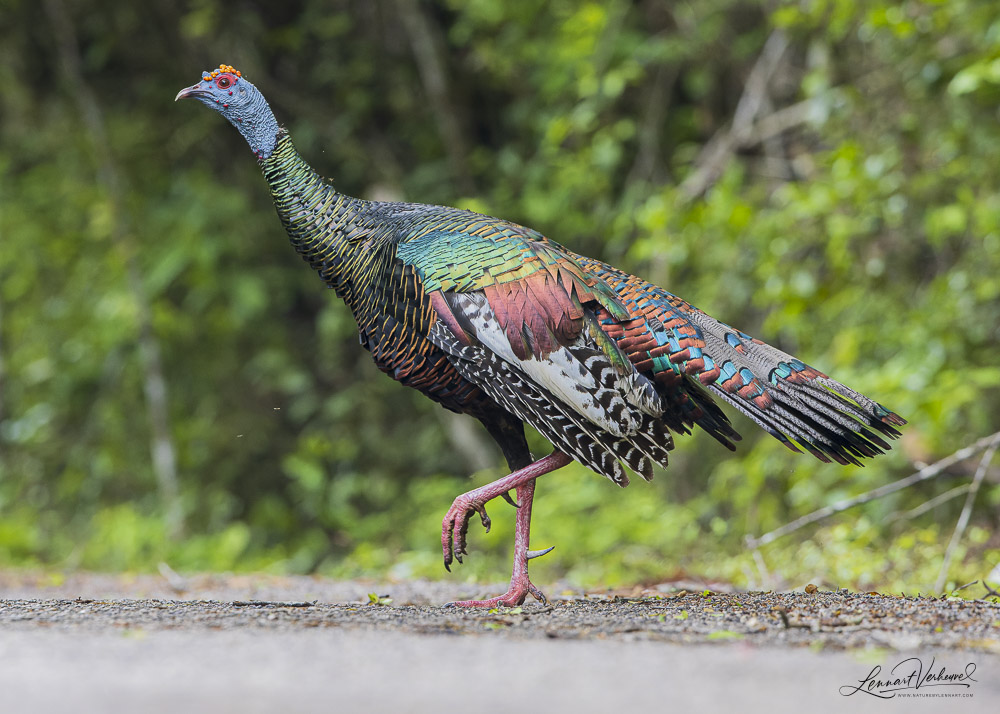
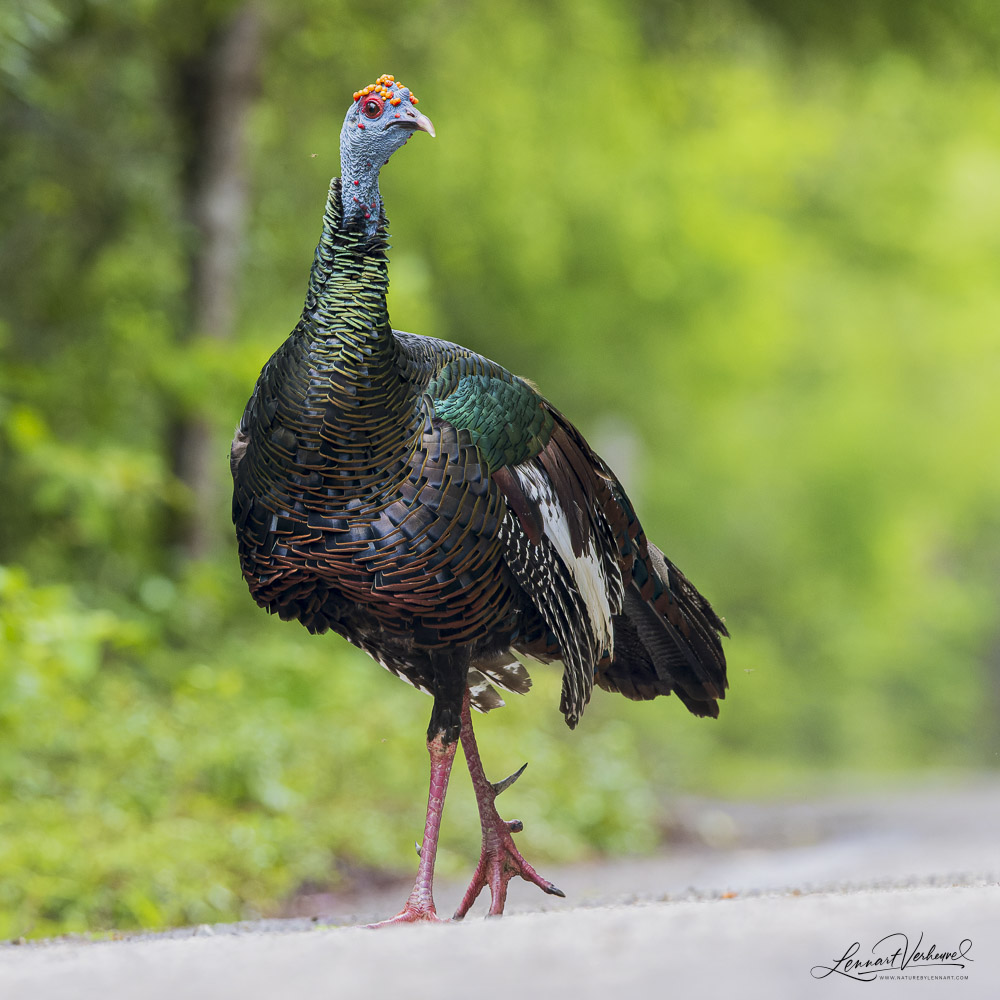

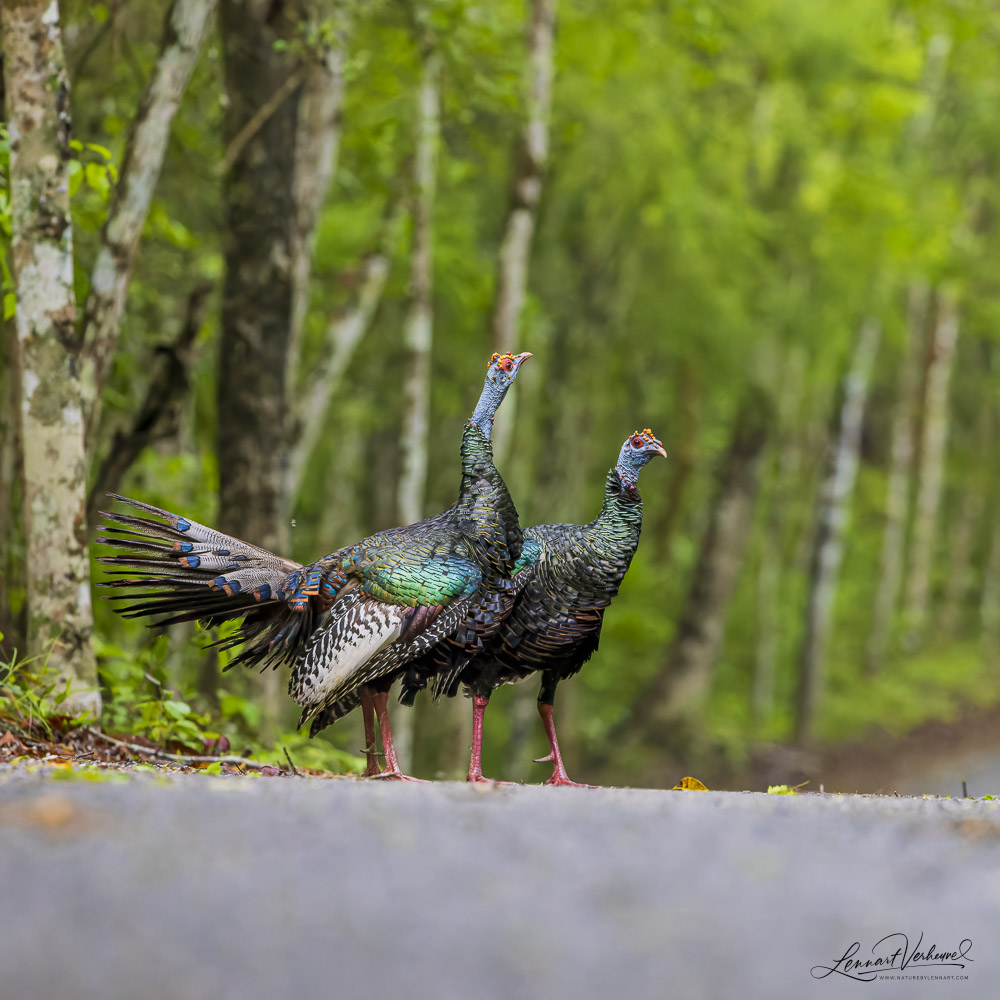
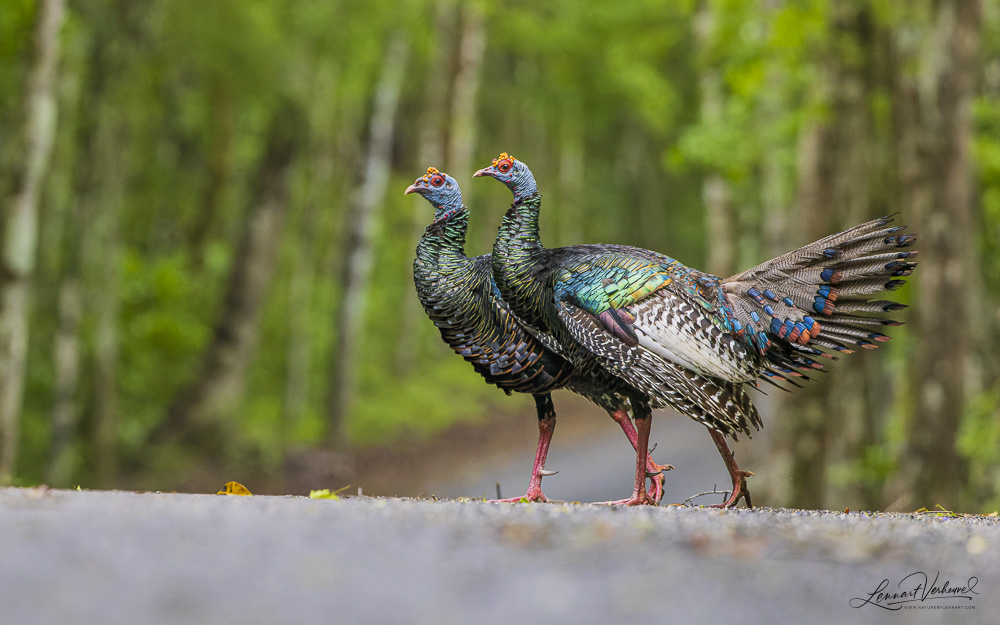
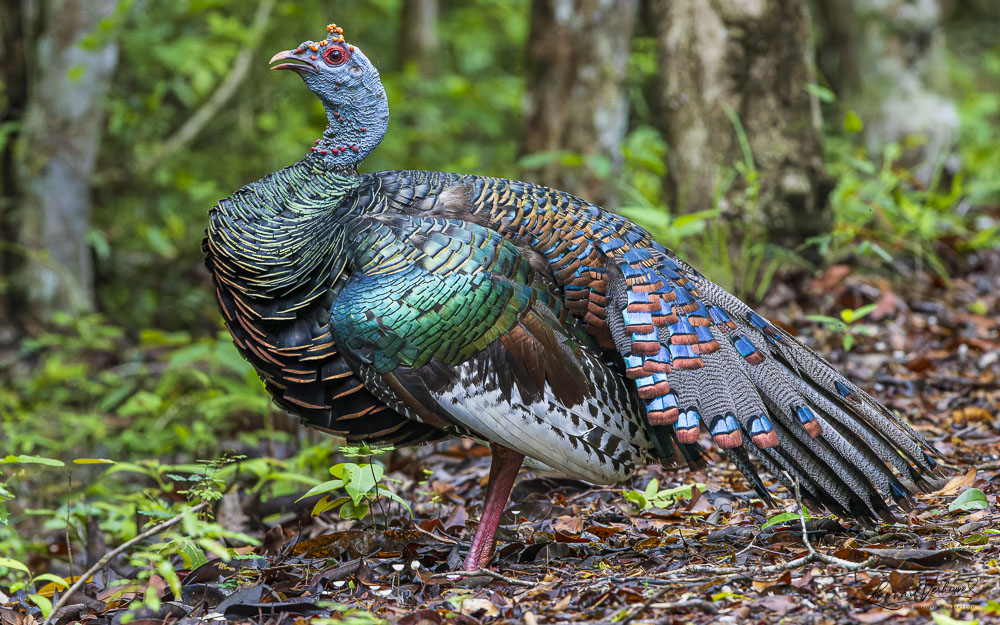
Ocellated Turkey
After several hours of birdwatching, I finally arrived at the archeological site Calakmul.
Calakmul is truly something very special. Chichén Itzá is the flagship of Mexican Mayan cities and is considered one of the Seven Modern Wonders of the World. From that list, I have also seen (chronologically) the Colosseum (Italy), Machu Picchu (Peru), Petra (Jordan), and the Taj Mahal (India). Now, it can certainly be debated whether this is the best list (why Cristo Redentor, for example, would be preferred over an impressive temple complex like Angkor Wat in Cambodia, I will never understand), but if Chichén Itzá is on the list, then Calakmul must rank even higher in my opinion.
Like Machu Picchu, Calakmul is located in pristine nature (unlike Chichén Itzá), it is even larger and more expansive than Chichén Itzá (and yet the main part of it is still covered by the jungle!), and its tallest pyramid is at least 30% higher than the tallest one at Chichén Itzá. Moreover, it is much less visited than Chichén Itzá, and you can still climb all the pyramids. I must make the caveat that I have not been to Chichén Itzá myself, so I cannot compare the experiences from a personal perspective, but I did read online that others appreciate the experience at Calakmul much more than at Chichén Itzá. This is largely due to the size of the crowd: Calakmul sees in a year what Chichén Itzá sees in a day.
I experienced this myself because I was already quite early there, and I wandered around for hours only encountering two other people. Absolutely a recommendation for anyone interested in ancient Mayan culture if you have the opportunity! But enough about the place, I went to explore it!
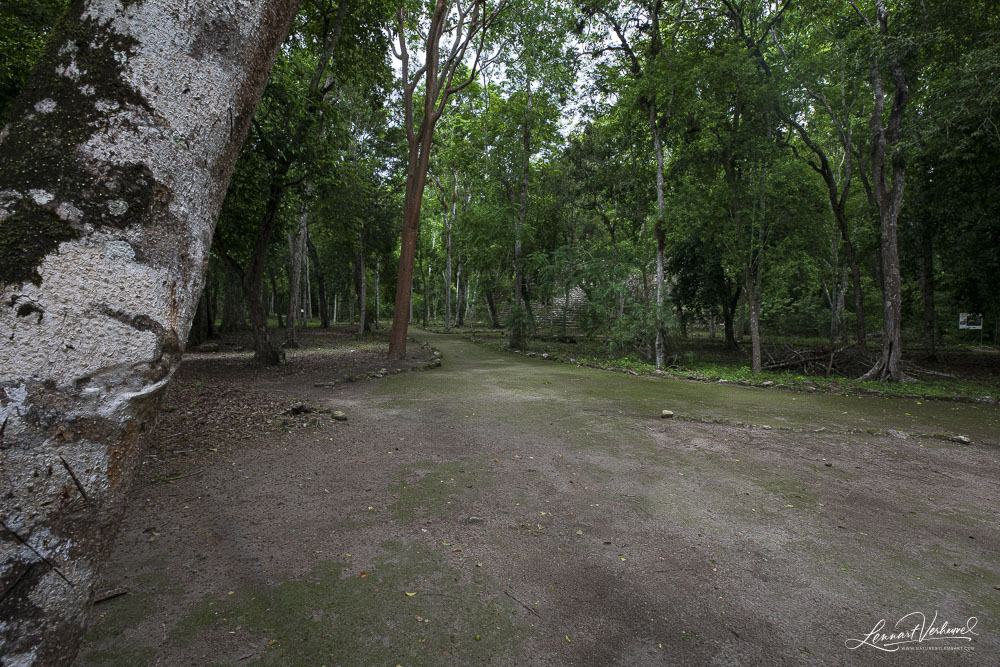
As I entered the complex, I was greeted by a young Howler Monkey making strange noises.

Central American Black Howler
I walked along the paths past various smaller structures until I reached the Great Piramid. This is the largest structure in Calakmul and one of the largest Mayan structures in Mexico.
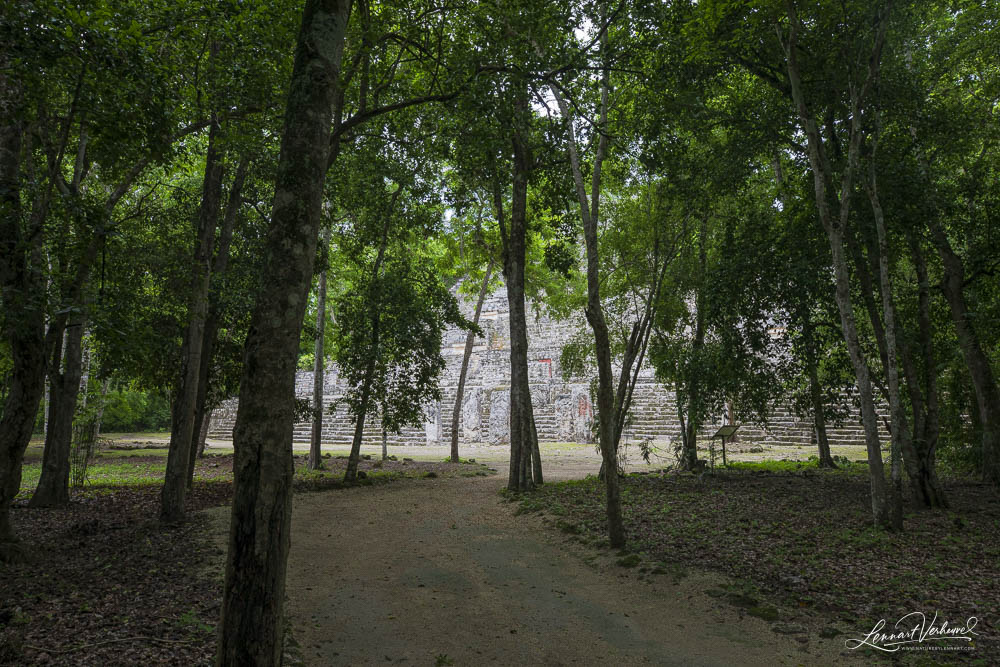
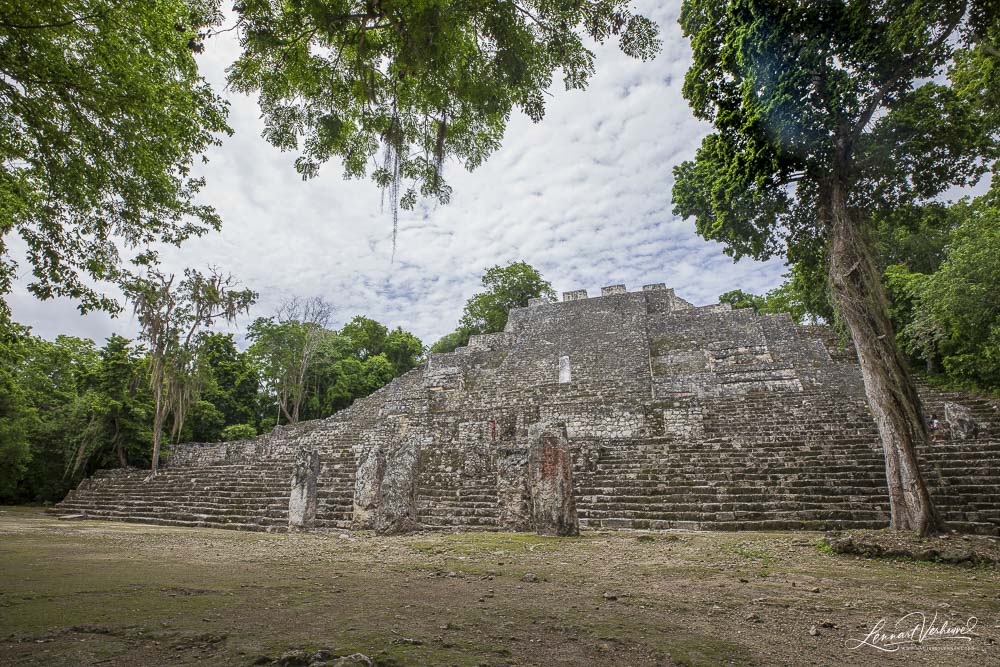

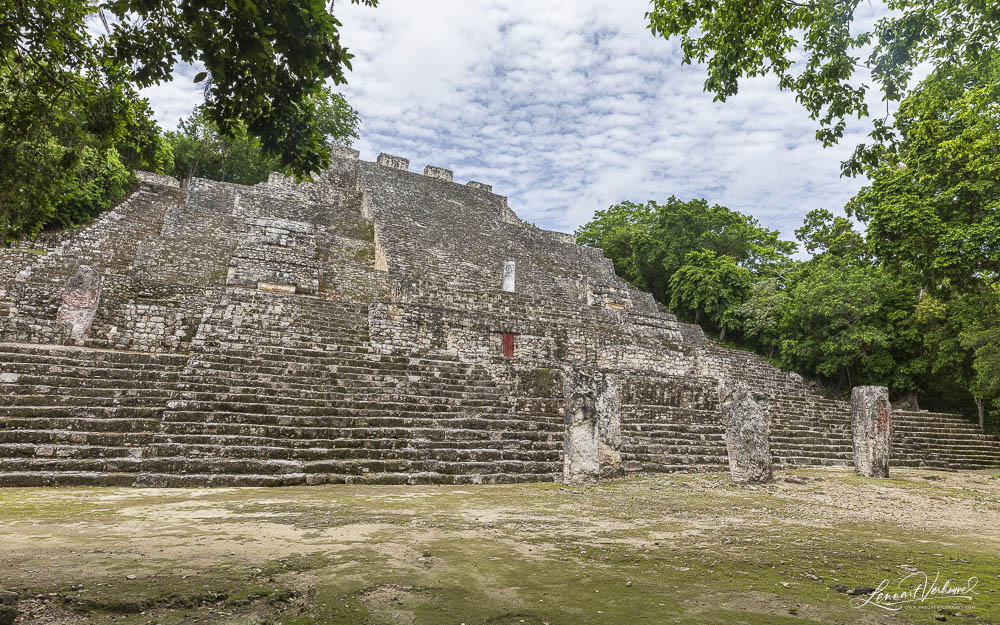
The Great Piramid of Calakmul
I climbed this one immediately too. After all, it was allowed here! The pyramid is 45 meters high and from there, I had a beautiful view over the entire jungle and a view of the other pyramid of The Two Towers rising above the jungle.
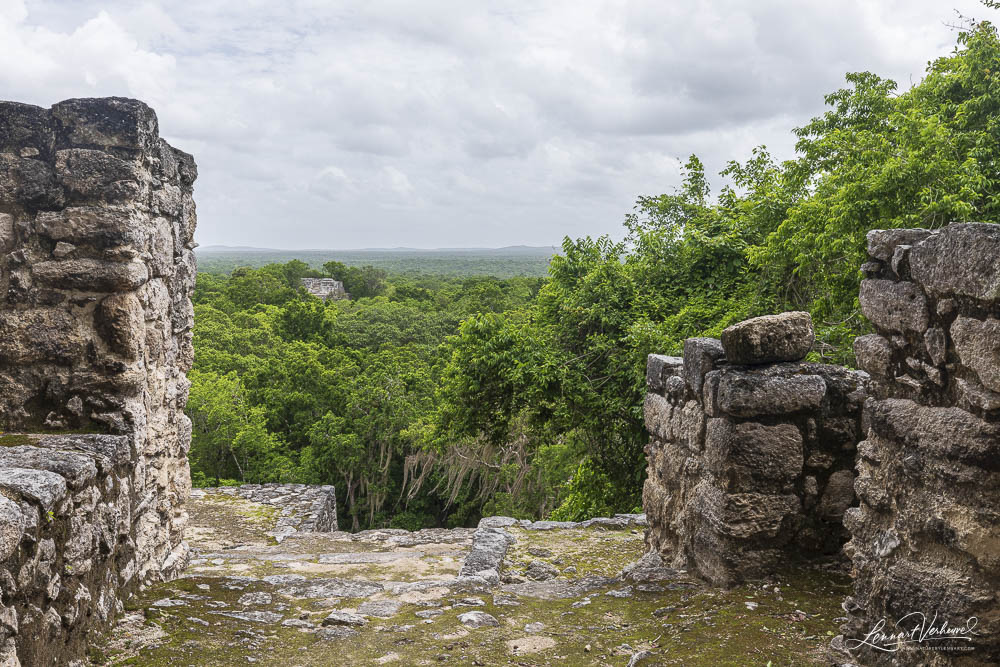
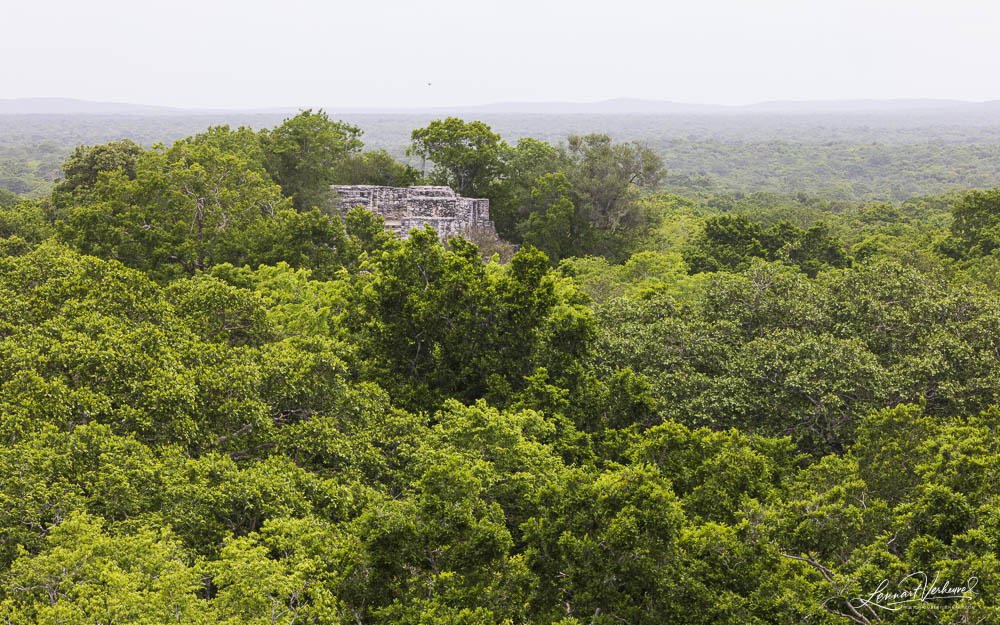
The pyramid of the Two Towers
Later in the day, I of course climbed that one too, and then I could look back at the previous one.
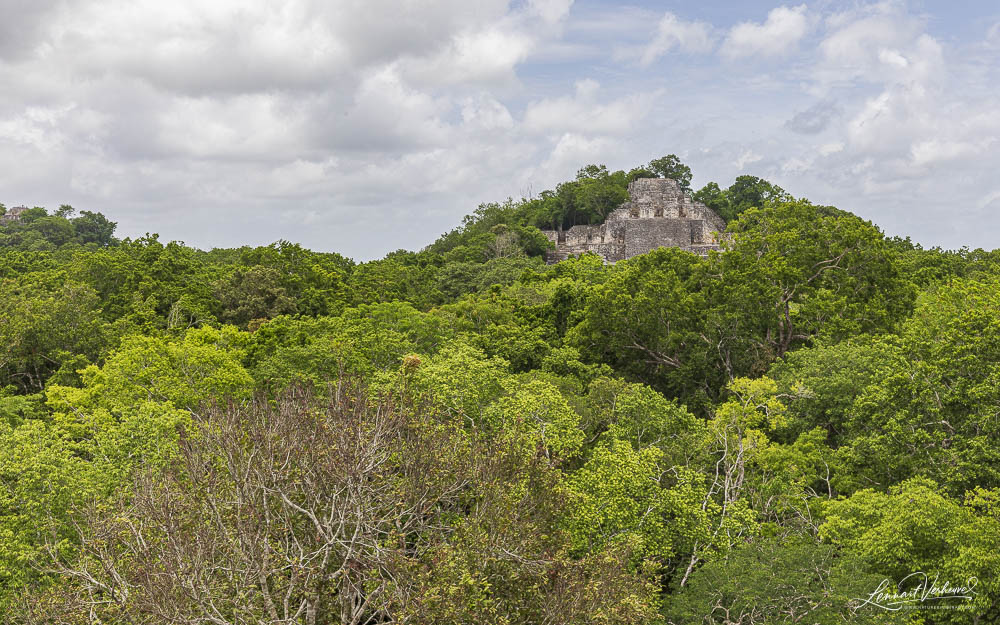
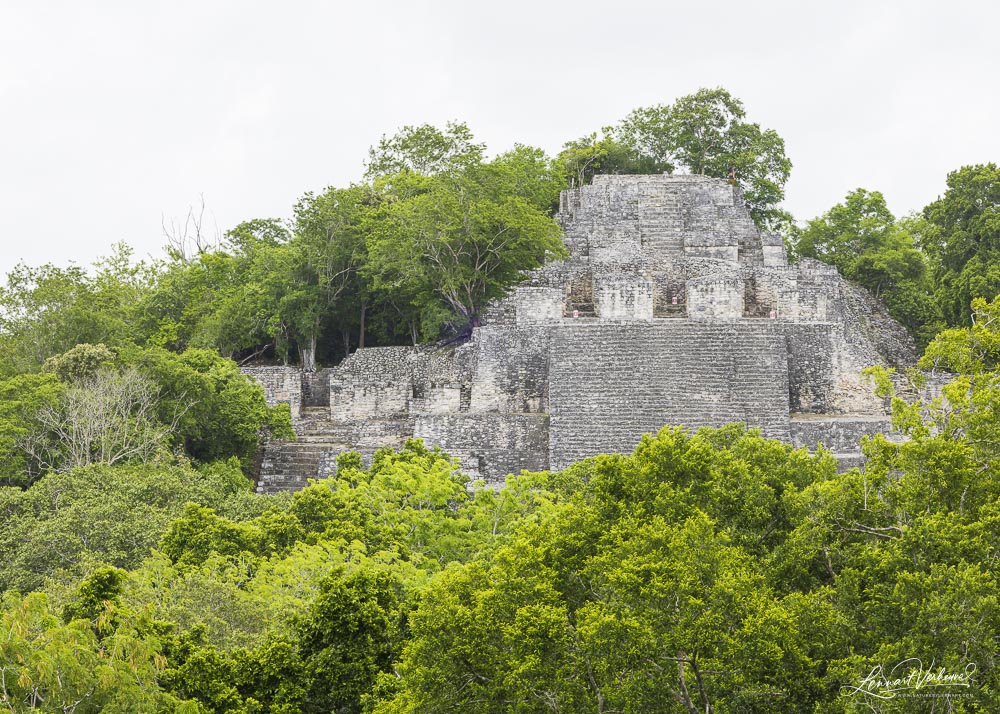
Great Pyramid of Calakmul
Furthermore there were other structures to admire.
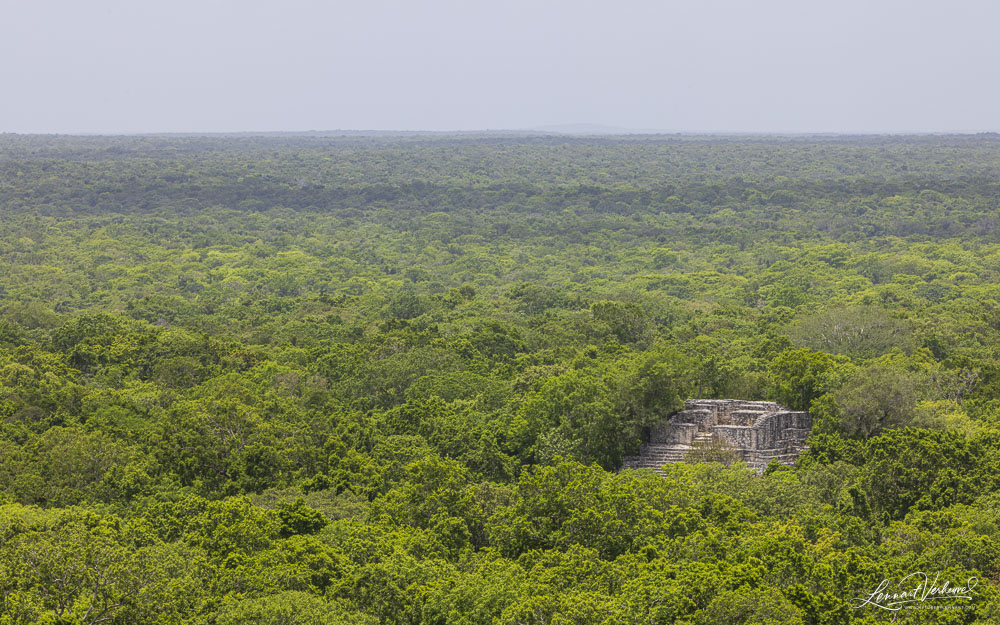
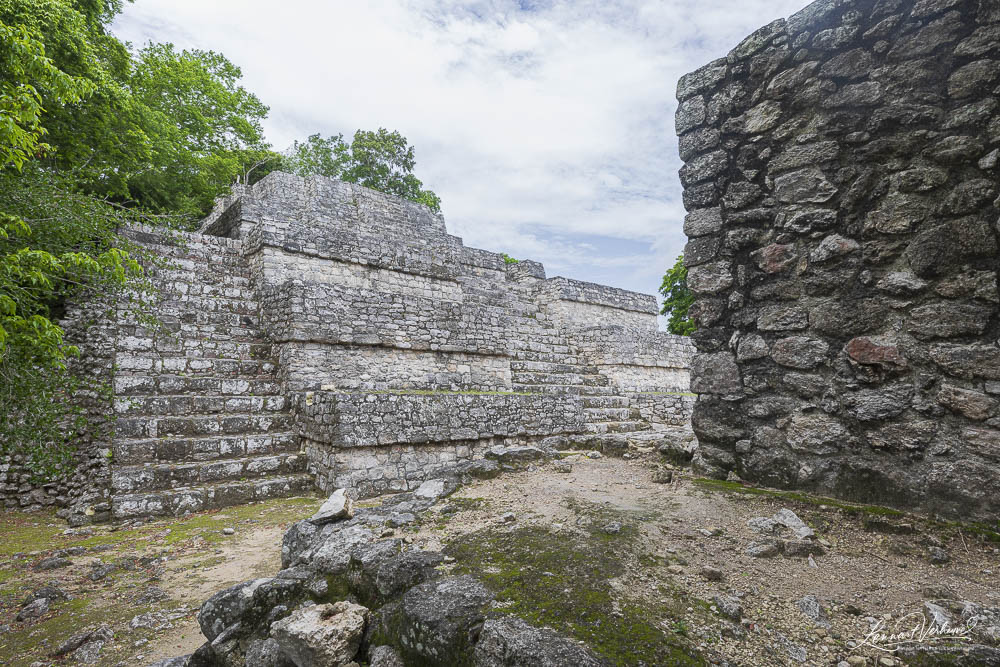
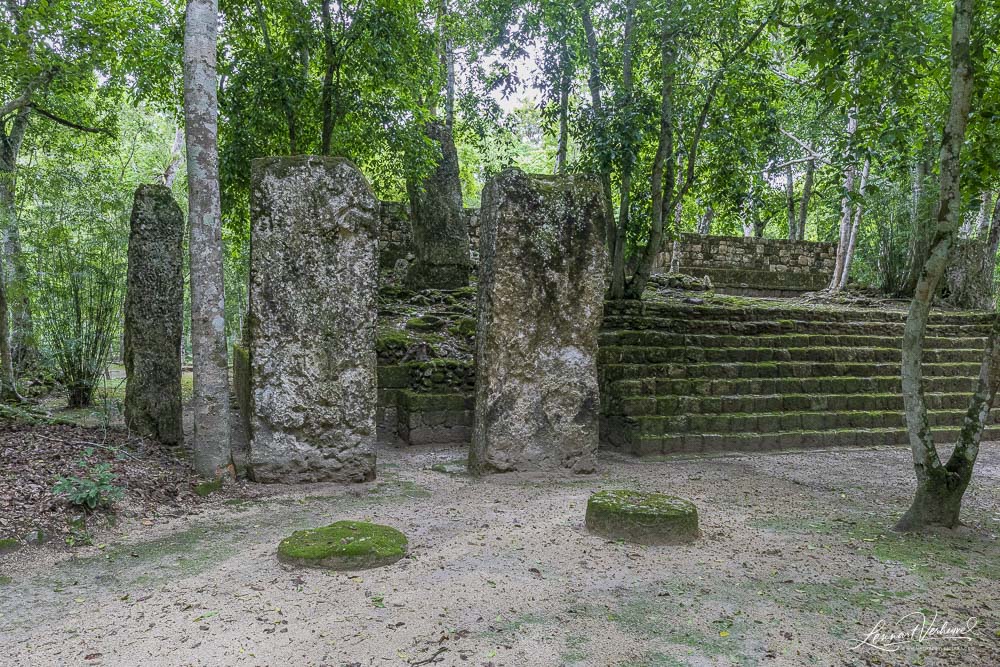
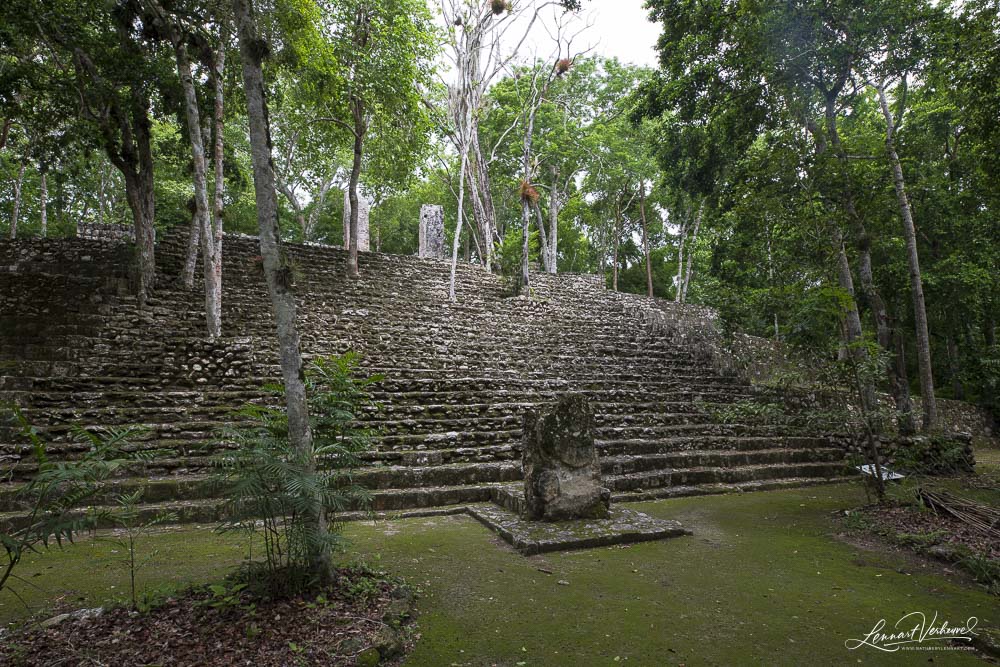

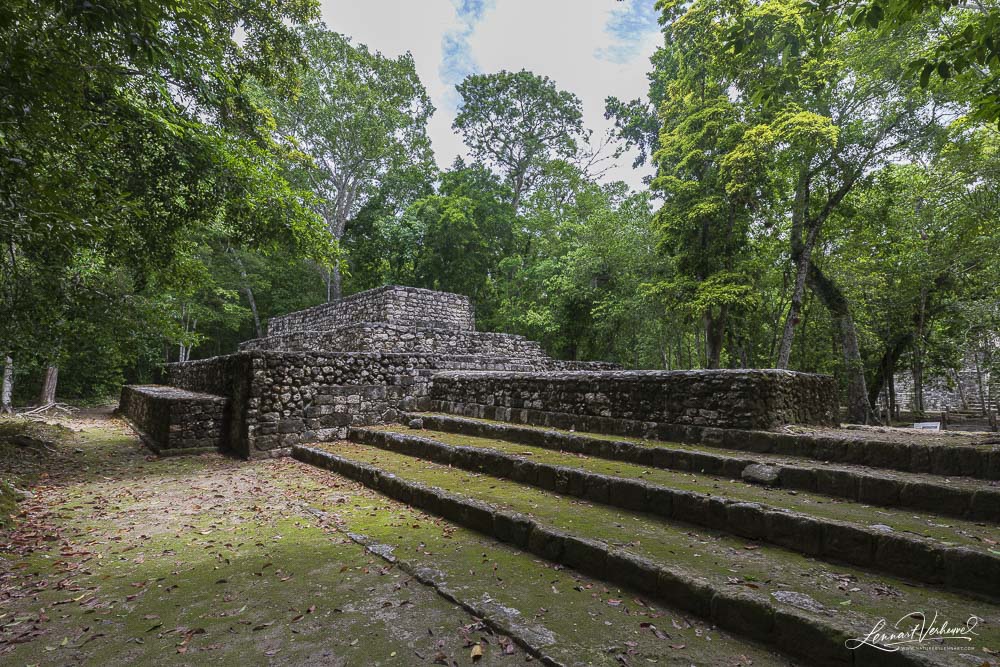
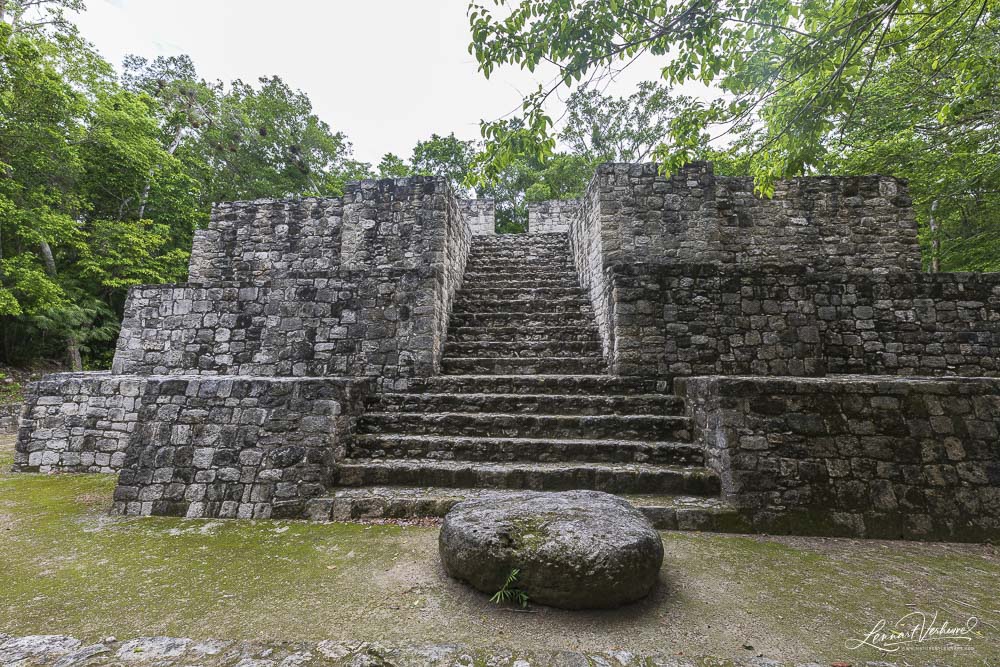

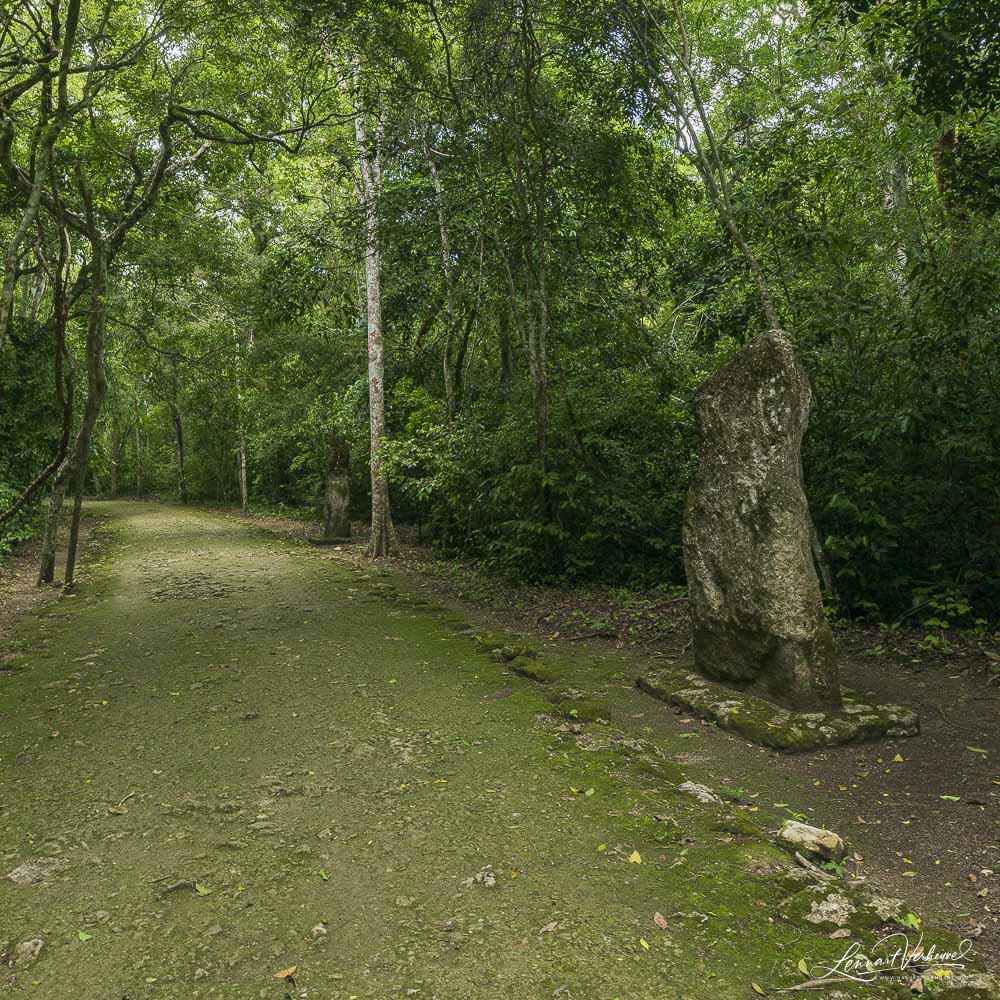
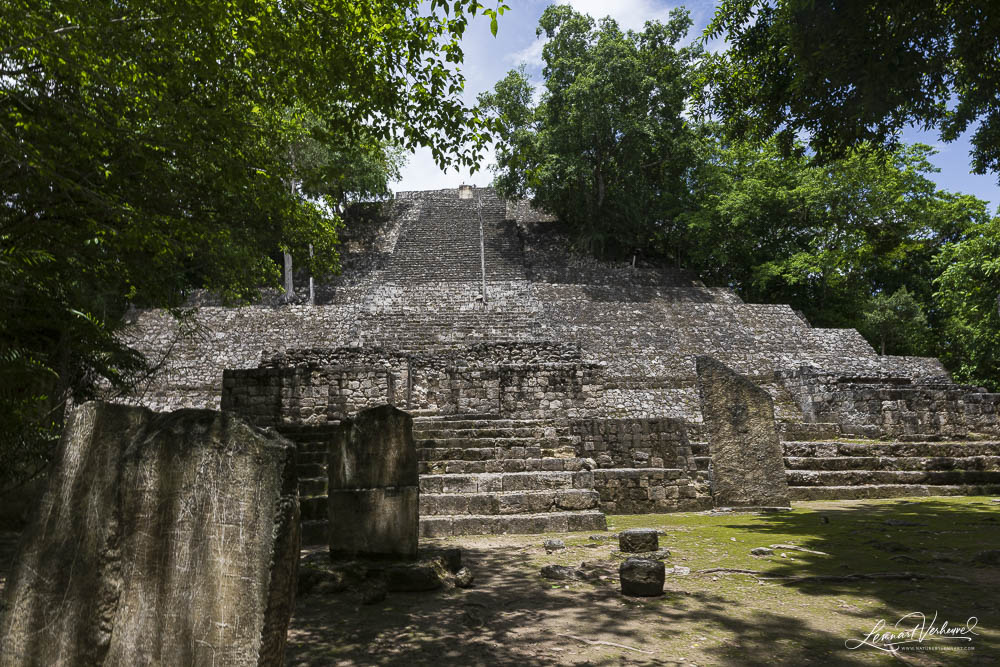
When I was completely done exploring Calakmul, it was already nearing noon.
The rest of my days in the reserve were spent searching for animals. Unfortunately, the night would be very disappointing. I suspected that there had likely been significant hunting during Covid in the first twenty kilometers. I also noticed a very clear difference in the numbers of Ocellated Turkeys before and after the checkpoint. Once, I saw a deer that could have been the endemic Yucatán Brocket Deer, but it disappeared lightning-fast. That too indicated high hunting pressure.
Luckily, I could still entertain myself with the birds. Throughout the day, I greatly enjoyed the most attractive motmot I had ever seen: the Turquoise-browed Motmot. Not rare, but incredibly beautiful!
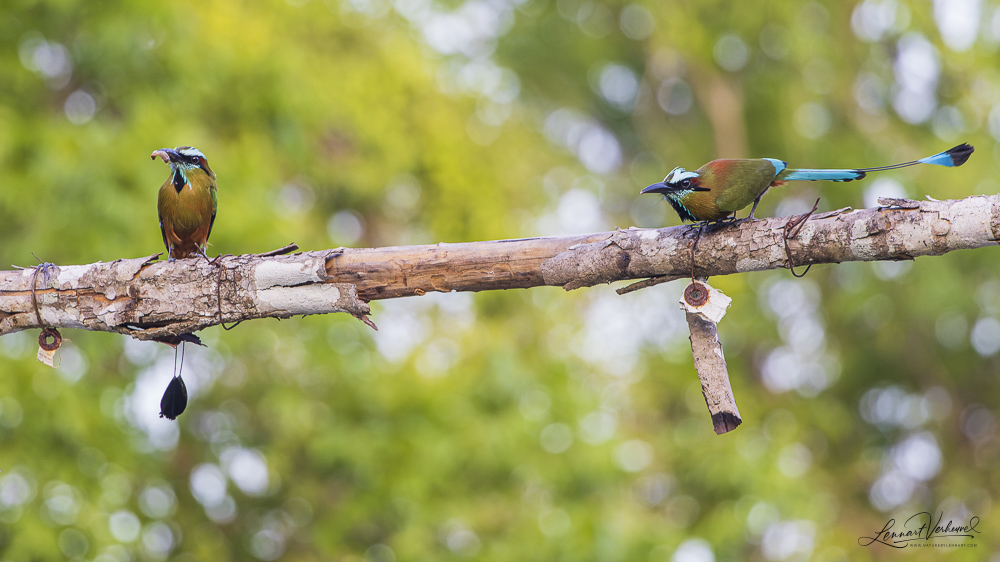


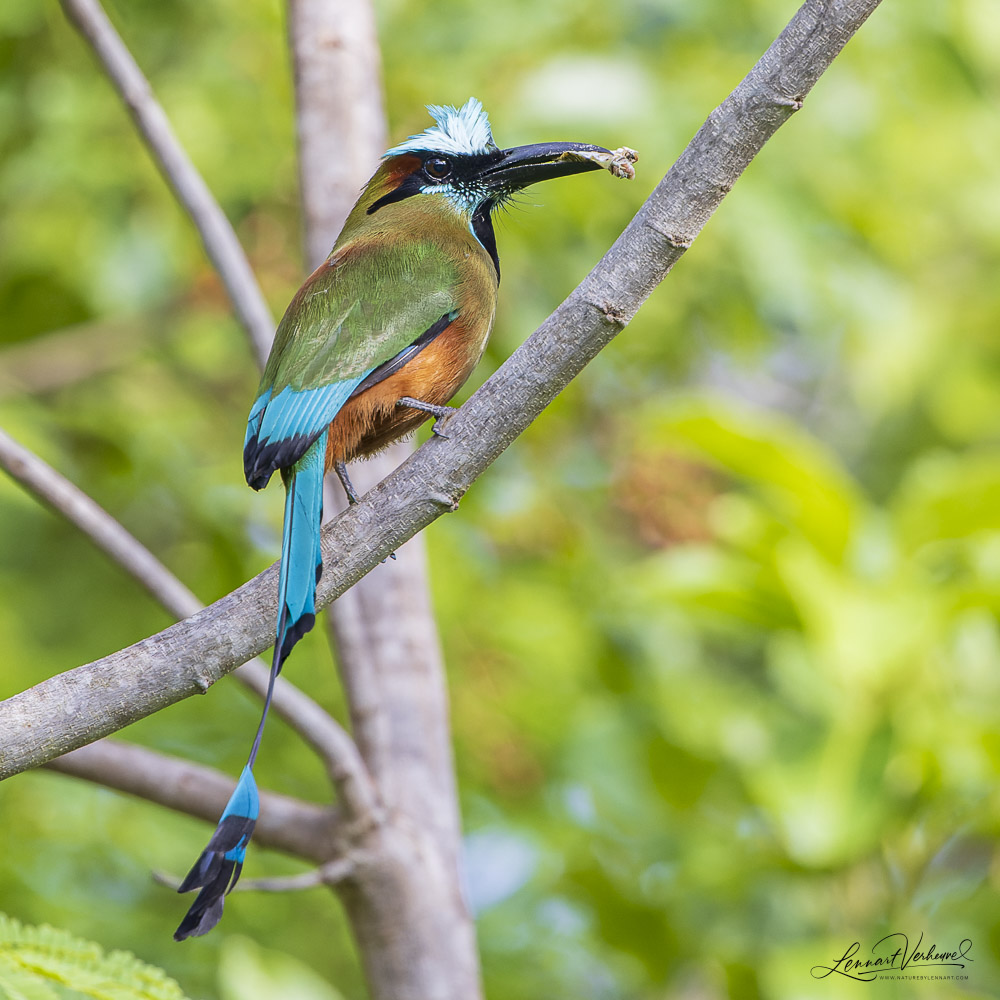
Turquoise-browed Motmot
Another species that deserves attention is the Blue Ground Dove. What a beautiful subtly colored dove that is!
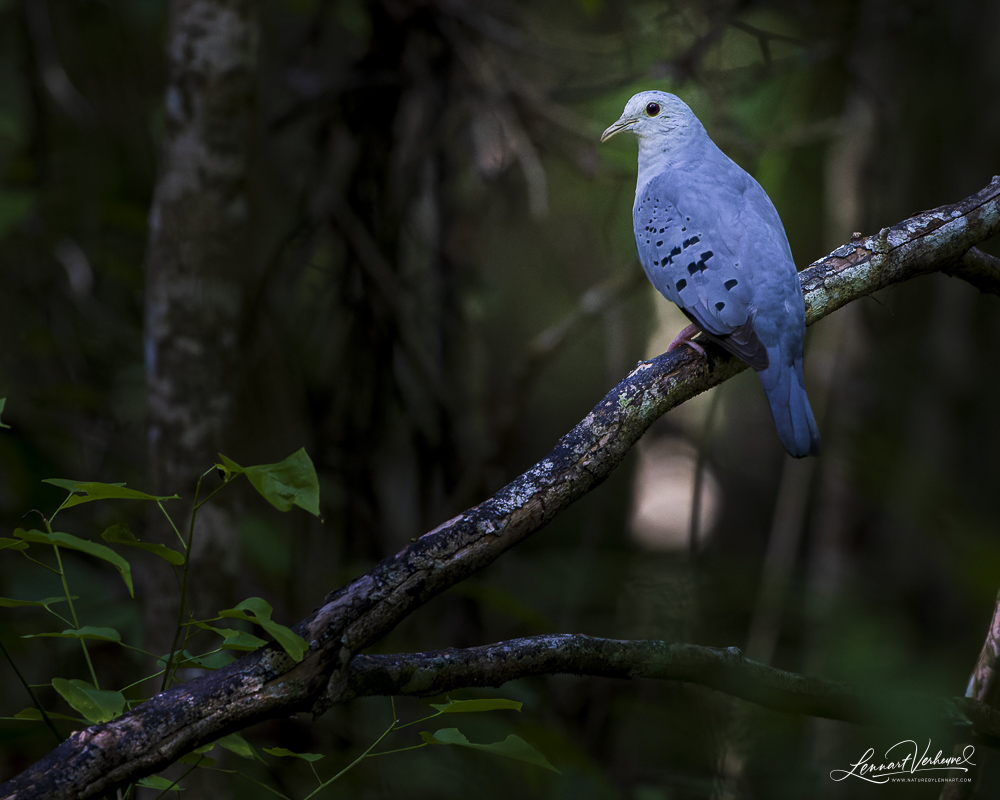
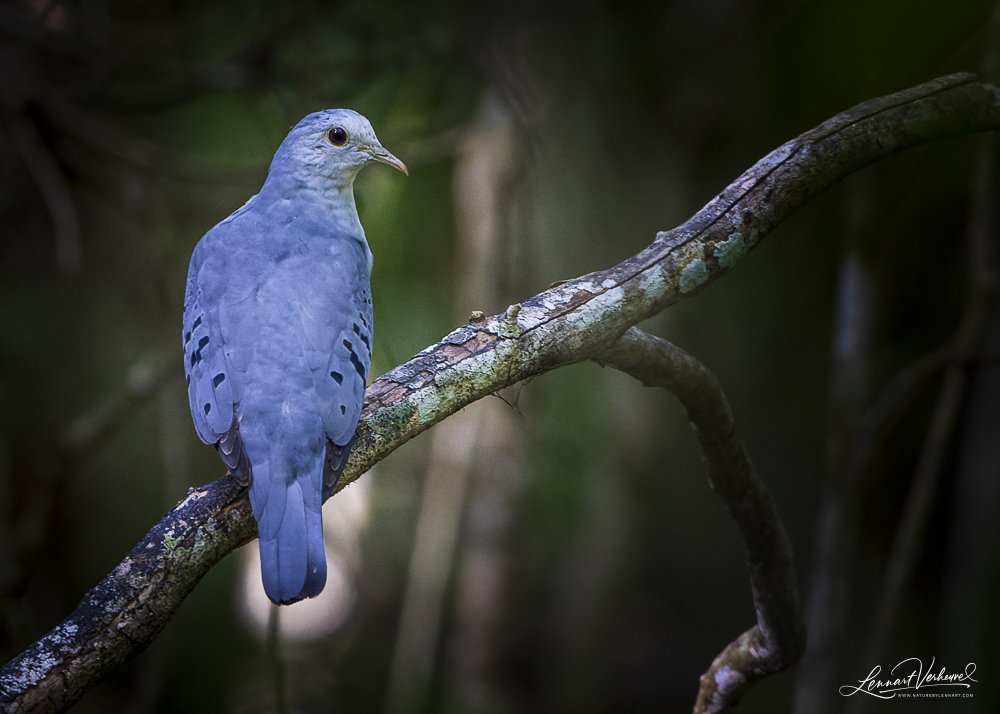
Blue Ground Dove
Additionally, there was, of course, a beautiful diversity of other songbirds. I found the Tropical Royal Flycatcher interesting to see because this bird has a very distinctive crest that is often shown in videos of ringers. Unfortunately, the bird only displays this crest mainly during high stress or courtship, so it is hardly ever visible in full glory in the field.
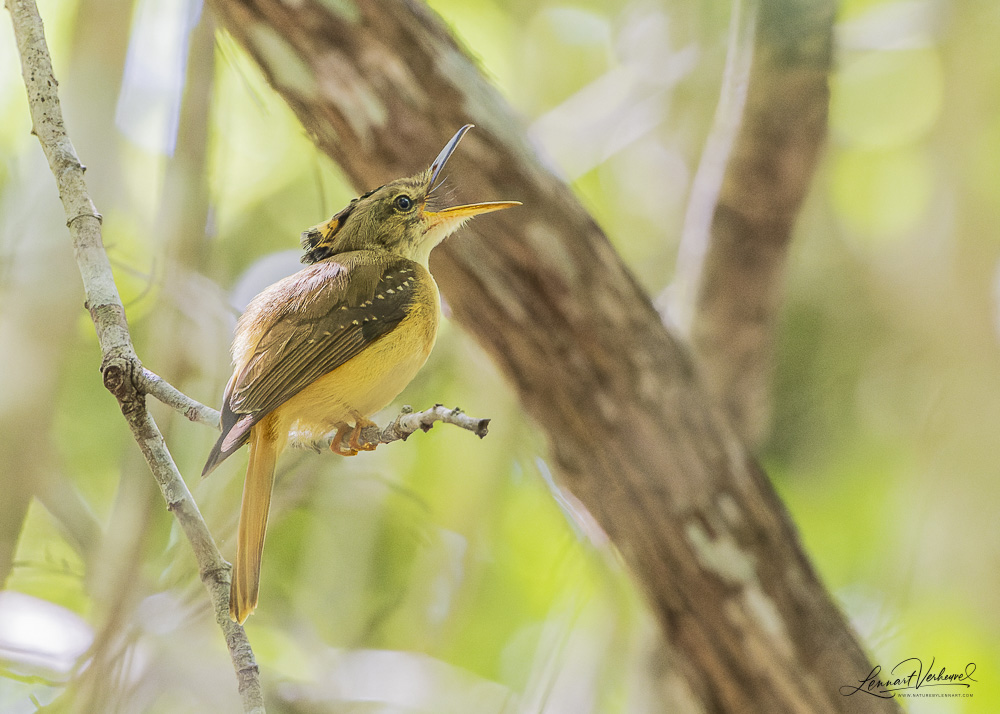
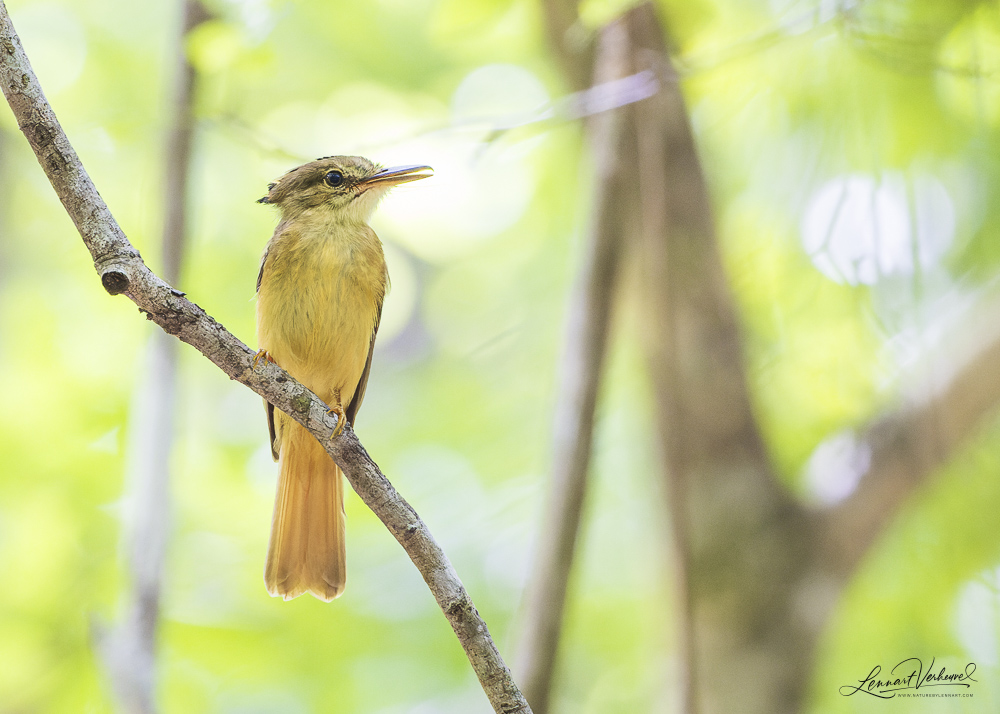
Tropical Royal Flycatcher
A Great Kiskadee also can’t be missing.
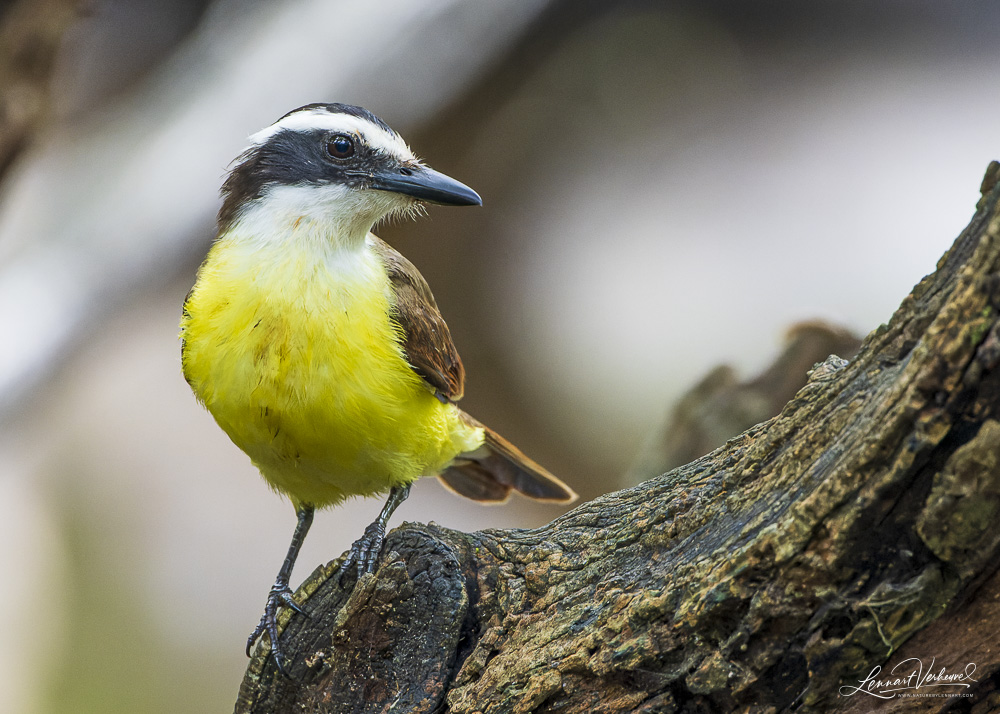
Great Kiskadee
Furthermore, the Grey-headed Tanager was a fairly common bird with beautiful soft colors.
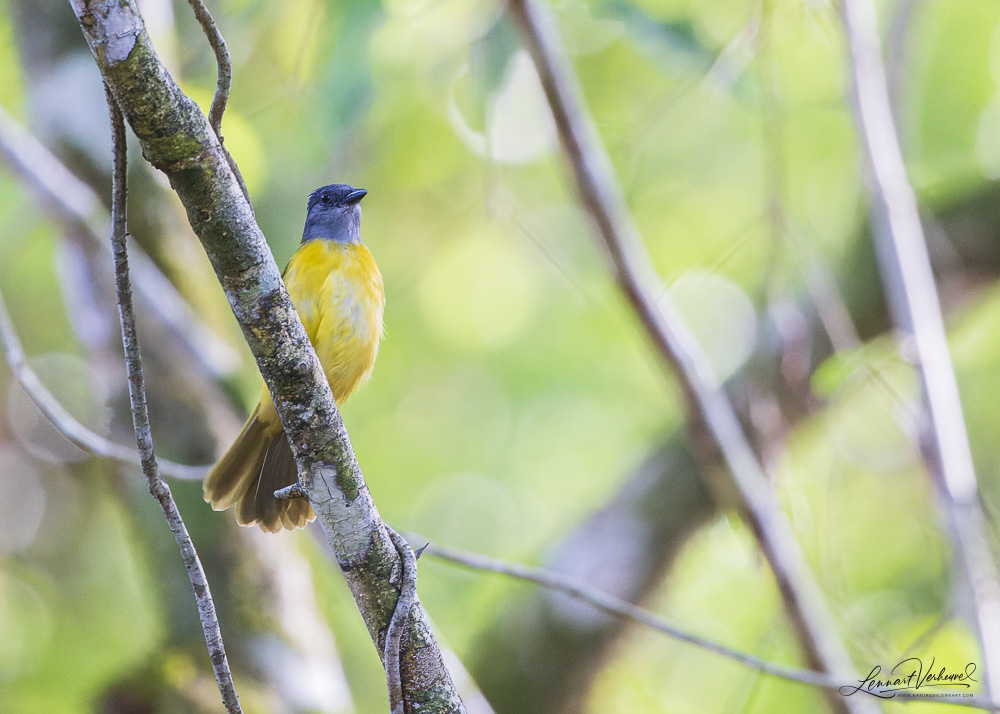
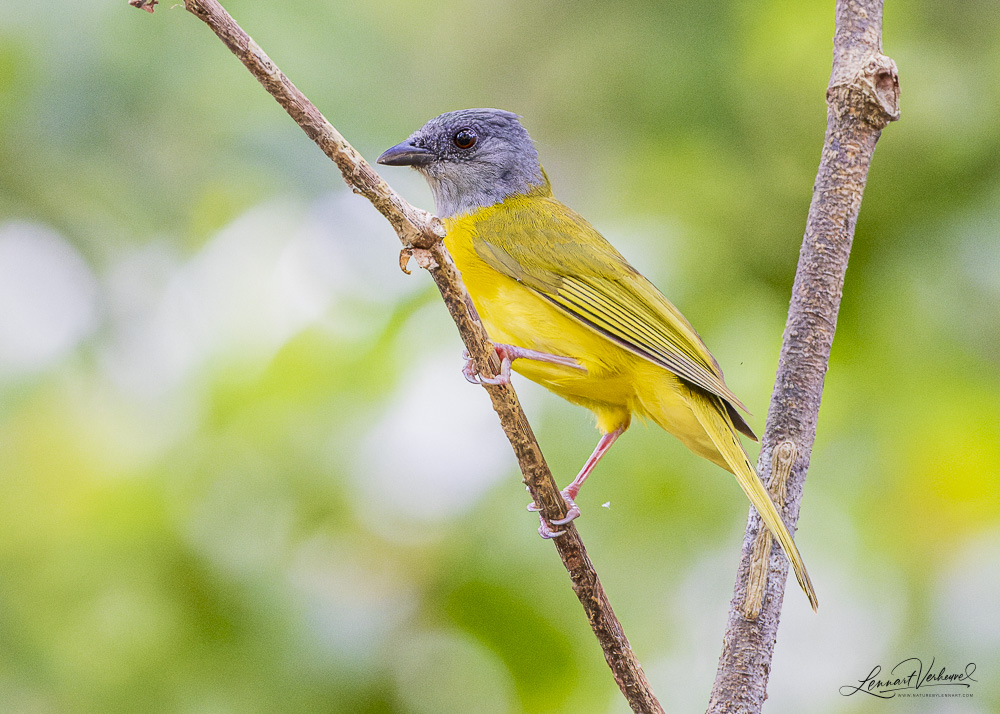
Grey-headed Tanager
More extravagant birds were the White-fronted Amazons. One of the specialties of Latin America is indeed the great diversity of parrot species which I always enjoy watching.
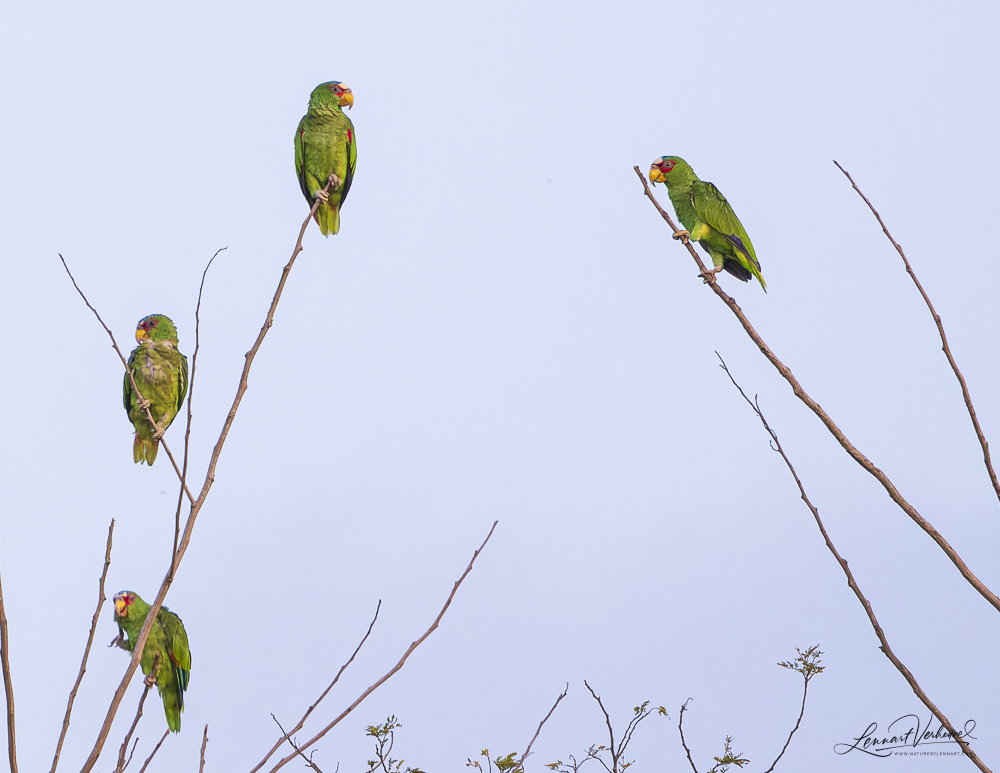
White-fronted Amazon
Mammals often walked on the road, such as the Central American Agouti.
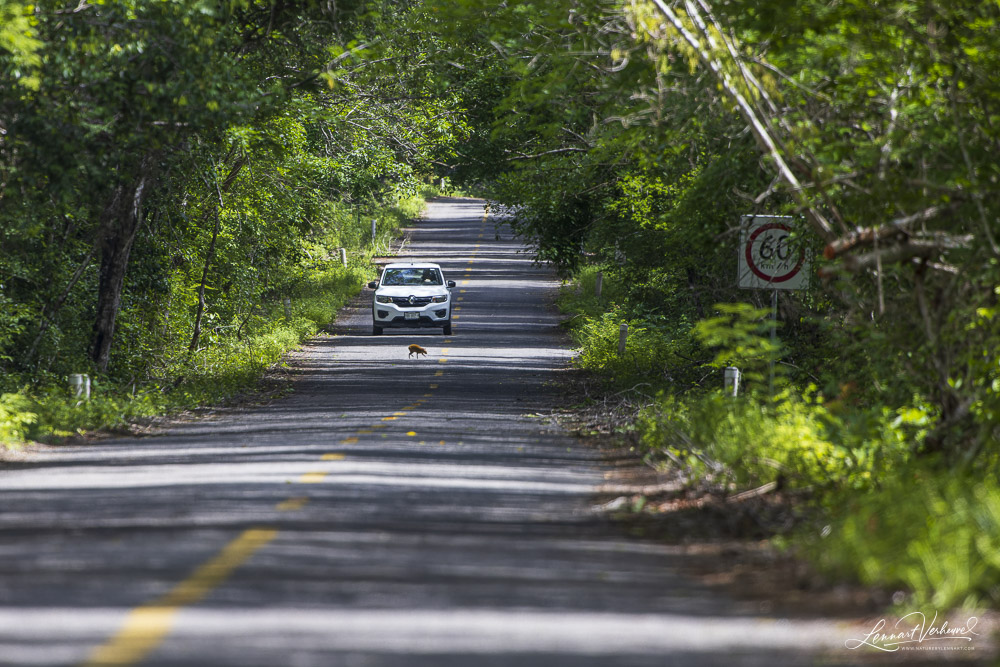
Central American Agouti
I also enjoyed seeing the Grey Fox, which was new to me.
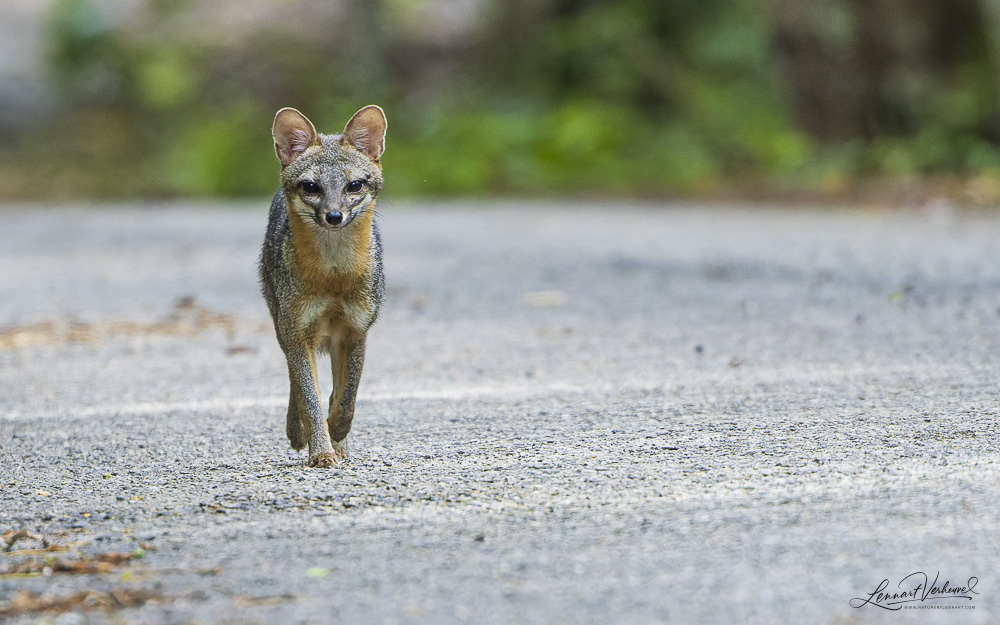
Grey Fox
In the trees, there were the Central American Black Howlers, I both saw and heard them. The sound of Howlers is like nothing else!
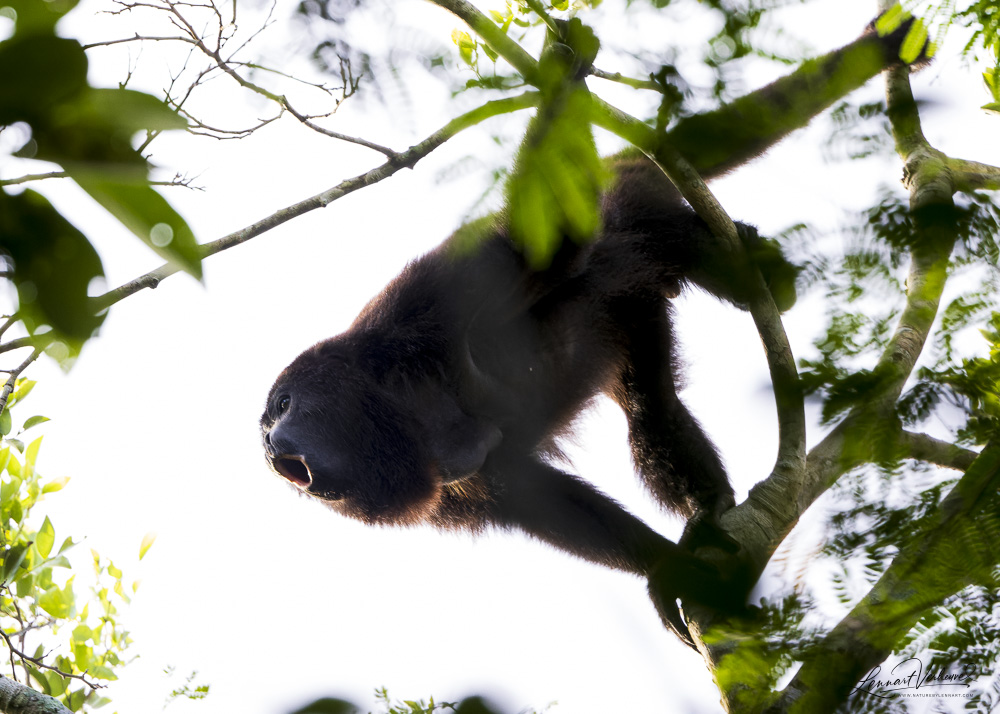
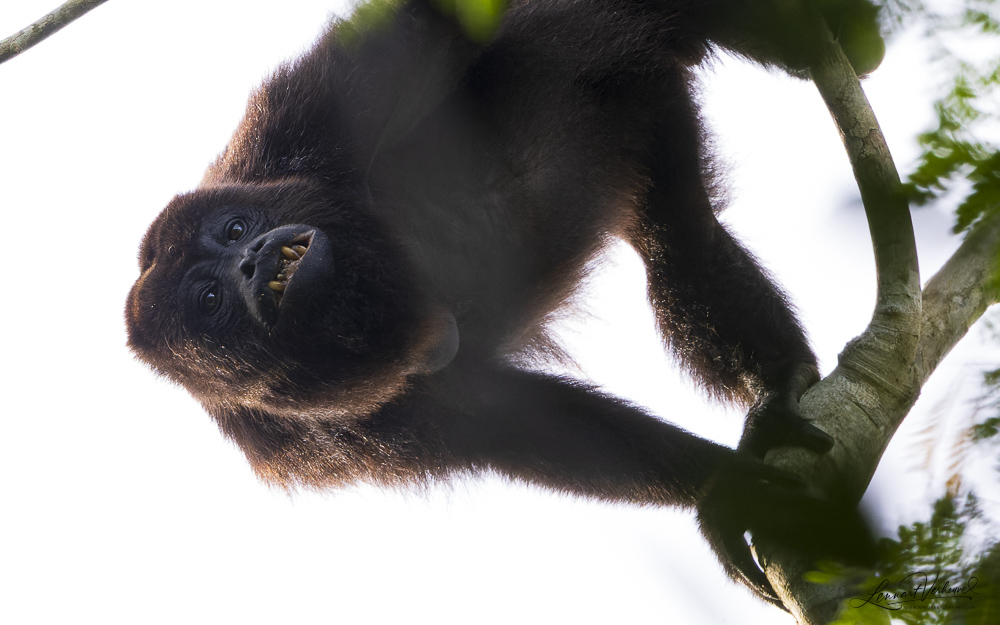

Central American Black Howler
A nocturnal highlight was encountering several Middle American Screech Owls on my last night, which were singing loudly. I had decided to walk the road on foot on my last night, which resulted in encountering a species like this one.
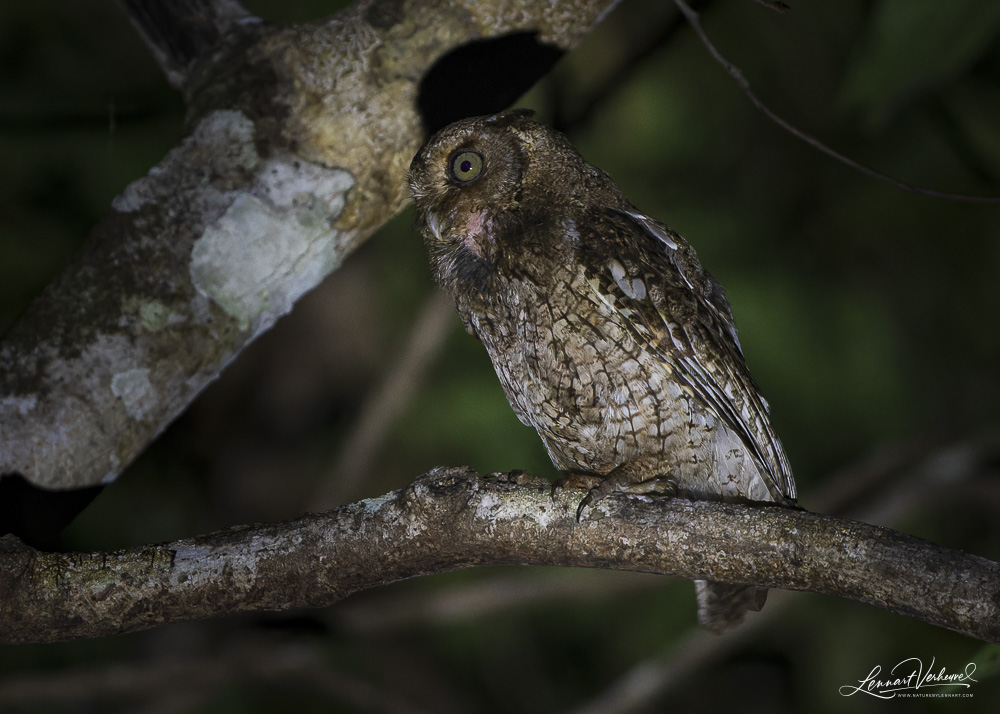

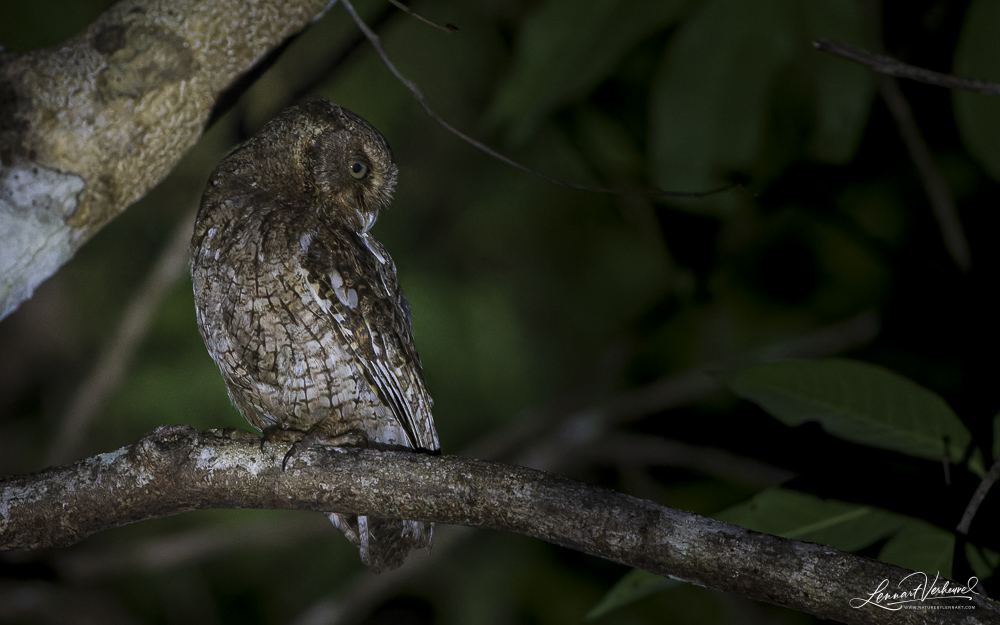
Middle American Screech Owl
Spotlighting at night turned out to be an effective method to get acquainted with the Mexican police. I was worried when I was checked for the first time, but they turned out to be honest and did not try to take advantage of me. They knew the owner of my tent camp well, so once I had made it clear that I was staying with ‘la señora’, everything was fine. I was even seriously warned after my last night on foot that there were apparently serious criminals driving around who could have kidnapped me. Apparently, it wasn’t as safe behind that barrier as I thought!
At least I got through it unharmed because after my third evening, I moved on to my next destination: the fishing village of Xcalak!
Want to see more from my trip to Mexico? How about the highlight of the trip!
And I also combined nature and culture under water… Have a look at the underwater museum MUSA!